traumatic brain injury
description: condition caused by an external force which has traumatically injured the brain
83 results

SuperBetter: The Power of Living Gamefully
by
Jane McGonigal
Published 14 Sep 2015
PHYSICAL POWER-UPS Sunshine on your shoulders: Go outside and let the sun touch your skin for at least five minutes. “This power-up was recommended to me by a nurse at the hospital where I’m getting treatment for a traumatic brain injury. She said to think of it as harvesting vitamin D from the sun. I have to admit, even on days when it feels like I can’t do anything right, this is something I can do.”* —Devon, twenty-four, whose challenge is to recover from a traumatic brain injury Dance break: Stop whatever you’re doing and dance to a favorite song. “I use this with my six- and eight-year-old girls, especially when they’re fighting with each other or giving me a hard time.
…
You are the person I always want to be superbetter for—which is easy, because every day you make me stronger, braver, and happier. Let’s always do three great things. Notes Introduction 1. Jessica L. Mackelprang et al., “Rates and Predictors of Suicidal Ideation During the First Year After Traumatic Brain Injury,” American Journal of Public Health 104, no. 7 (2014): e100–e107; Nazanin H. Bahraini et al., “Suicidal Ideation and Behaviours After Traumatic Brain Injury: A Systematic Review,” Brain Impairment 14.01 (2013): 92–112. 2. Richard G. Tedeschi and Lawrence G. Calhoun, “Posttraumatic Growth: Conceptual Foundations and Empirical Evidence,” Psychological Inquiry 15, no. 1 (2004): 1–18. 3.
…
That meant no reading, no writing, no running, no video games, no work, no email, no alcohol, and no caffeine. I joked to my doctor at the time: “In other words, no reason to live.” There was quite a bit of truth in that joke. I didn’t know it then, but suicidal ideation is very common with traumatic brain injuries—even mild ones like mine.1 It happens to one in three, and it happened to me. My brain started telling me: Jane, you want to die. It said, You’re never going to get better. The pain will never end. You’ll be a burden to your husband. These voices became so persistent and so persuasive that I started to legitimately fear for my life.

Yoga Nidra: The Art of Transformational Sleep
by
Kamini Desai
Published 7 Mar 2017
This was the first time I clearly saw the limits of psychological insight. Mere insight would not change this girl’s lifestyle. Nor has it been enough for thousands of patients who have followed. Last year, in a social setting, I met a 45-year-old Iraq War veteran. He said he was suffering from Traumatic Brain Injury (TBI) and Post-Traumatic Stress Disorder (PTSD). He reported that he was being treated as an outpatient at a VA Hospital and was taking fifteen different, powerful psychiatric medications to control his numerous symptoms. He was also receiving counseling. I subsequently learned that he committed suicide and joined the ranks of the 23 US Veterans who kill themselves each day.
…
It seems that slow-wave sleep induced immediately after a brain injury helps prevent axon damage and helps the brain retain normal brain function.[6] Even though the diagnosis of brain injury is increasing, very few effective, non-invasive and accessible treatments exist to prevent or even reverse compromised cognitive function. Yoga Nidra could be an important tool to enhance recovery from traumatic brain injury because of the slow-wave Delta brainwave state it induces. In Theta brainwave states, we gain access to unconscious patterns and behaviors that, unbeknownst to us, guide our conscious actions, thoughts and behaviors (Figure 4). Thus, in this brainwave state, we can make potential changes in these behaviors.
…
“Slow-Wave SleepImposed Replay Modulates Both Strength and Precision of Memory.” Journal of Neuroscience 34.15 (2014): 5134-142. Web. 23 Mar. 2016. [6] 6 – Strecker, Robert, and David Uygun. “Faculty of 1000 Evaluation for Sleep Modulation Alleviates Axonal Damage and Cognitive Decline after Rodent Traumatic Brain Injury.” F1000 Post-publication Peer Review of the Biomedical Literature. Web. 23 Mar. 2016. [7] 7 – Nishida, M., J. Pearsall, R. L. Buckner, and M. P. Walker. “REM Sleep, Prefrontal Theta, And The Consolidation Of Human Emotional Memory.” Cerebral Cortex 19.5 (2009): 1158-66. [8] 8 – Lagopoulos, J., J.
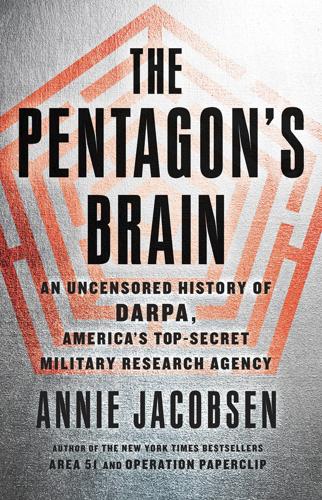
The Pentagon's Brain: An Uncensored History of DARPA, America's Top-Secret Military Research Agency
by
Annie Jacobsen
Published 14 Sep 2015
The agency’s long-term goals in brain science research, it says, revolve around trying to restore the minds and memories of brain-wounded warriors. Through the Office of the Secretary of Defense (OSD), I submitted multiple written requests to interview one or more brain-wounded warriors who are currently participating in DARPA’s brain research programs. OSD and DARPA repeatedly declined. Traumatic brain injury is as old as war. U.S. soldiers have sustained traumatic brain injuries in each and every one of America’s wars since the Revolution. When I learned that Allen Macy Dulles, the brain-wounded warrior from the Korean War, was, at age eighty-four, living just down the road from the Los Alamos National Laboratory, I arranged to visit him—before heading to Dr.
…
Doctors told us there would be no hearing in one ear but he could speak, just like someone who was normal. At first there was hope. Allen seemed normal when we took him home. But as month after month passed, he was not able to make a life for himself. Then we realized what had been injured was his mind.” Dulles had suffered a catastrophic traumatic brain injury. The promising young scholar, brave Marine, and son of the deputy director of the CIA was, in the words of his sister, “caught between worlds. It was as if he were trapped in a faraway place,” Talley continued. “Allen was there, but not really there. It was so terribly tragic. He was so young.
…
PART III OPERATIONS OTHER THAN WAR CHAPTER FOURTEEN Rise of the Machines During the Korean War, when Allen Macy Dulles left the trench at Outpost Bunker Hill and headed down to check the fence, he was doing what soldiers have done for millennia. He was going out on patrol. The moment when Dulles saw someone had cut the fence, he likely sensed danger was near. But before he had time to notify anyone of the incursion, the twenty-two-year-old soldier took enemy shrapnel to the head, suffered a traumatic brain injury, and was rendered amnesic. Like millions and millions of soldiers before him, he became a war casualty. The Vietnam electronic fence, conceived and constructed hastily during the war, created the opportunity to change all that. Technology could do what humans had been doing all along: patrol and notify.
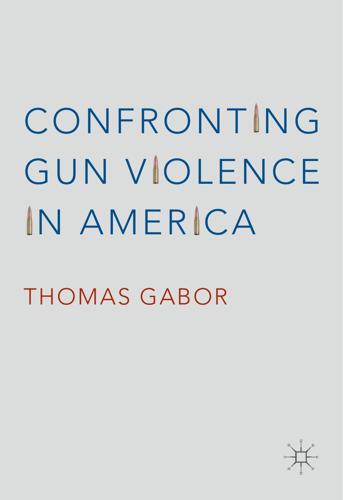
Confronting Gun Violence in America
by
Thomas Gabor
Published 12 Sep 2016
Available from: http://www2. ed.gov/finaid/prof/resources/finresp/ReportToCongress.pdf 3. U.S. Department of Justice. Violent victimization of college students, 1995–2002. Washington, DC: Bureau of Justice Statistics; 2005. Available from: http://www.bjs.gov/content/pub/pdf/vvcs02.pdf 4. Salisbury D, Novack T, Brunner R. Traumatic brain injury caused by violence [Internet]. Birmingham: University of Alabama Traumatic Brain Injury Model System. Available from: http://main.uab.edu/tbi/show. asp?durki=85704 5. Richter R, Zaki M., Selective conservative management of penetrating abdominal wounds. Ann Surg. 1967; 166(2): 238–244. 6. Diaz T. Making a killing: the business of guns in America.
…
Whether the offense is committed by a calculating, cold-blooded killer or by an individual exhibiting rage, there is strong evidence showing that firearms are more lethal than other weapons. Professionals in the medical field have shown the damage to humans produced by high-velocity weapons that fire larger bullets designed to cause severe injuries. Researchers specializing in the care of patients with traumatic brain injuries at the University of Alabama have described what happens to the brain when a person is shot in the head: Passage of a bullet can cause laceration (tearing) injuries to the brain, as well as shock waves with cavitation (temporary stretching). … This creates an area of disrupted tissue surrounding the path of the bullet.
…
Members of Congress sympathetic to the gun lobby initially tried to shut down the CDC’s injury prevention center completely, arguing that the center was pursuing an anti-gun political agenda. When they did not succeed, they stripped funds from the CDC’s budget. The funds were later restored but were designated for research on traumatic brain injury. The following language was also included in the CDC’s appropriations bill: “None of the funds made available for injury prevention and control at the Centers for Disease Control and Prevention may be used to advocate or promote gun control.” No other field of inquiry is singled out in this way.

The Patient Will See You Now: The Future of Medicine Is in Your Hands
by
Eric Topol
Published 6 Jan 2015
As one Alzheimer researcher put it to David Epstein in The Sports Gene: “the dementia risk of having a single apoε4 copy is roughly similar to the risk from playing in the National Football League (NFL), and . . . the two together are even more dangerous.”32 In fact, when I watch football and see a player with any head injury, the first thing I think about is whether the player is unknowingly an apoε4 carrier, in which case he might suffer irrevocable brain damage over time. These days, after decades of discrediting the research linking football and traumatic brain injury, the NFL has finally cued into the major risk of concussions. Use of sensors in player’s helmets, with impact-sensing accelerometers to quantify the extent of head injury, even without a concussion, are starting to be tested in the NFL. But there has been no genetic screening or evaluation of the large number of former players who suffer traumatic brain injury. Moreover, we have yet to address the issue of screening in children who are considering participation in high-risk sports.
…
Compared with individuals with apoε2 or ε3 variants, who represent more than 80 percent of the population, apoε4 carriers and homozygotes are especially prone to bad outcomes following head injuries, including prolonged recovery, cognitive impairment, and developing dementia at an early age. Especially worrisome is the risk of traumatic brain injury (TBI), a syndrome that encompasses a range of serious neurologic and psychiatric effects for which there is no known effective treatment. Sports with high risk of head injury, such as boxing or football, are of particular concern, and some experts have even suggested that athletes participating in these sports should be screened for apoε4 variants.
…
One concern, however, is that whatever is assayed needs to be technically validated to know it is accurate and to be clinically useful for patient outcomes (i.e., actionable) and cost-effective. Even though there are exciting and unprecedented opportunities to measure unique proteins via a smartphone device, such as those indicative of traumatic brain injury or any type of cancer,54 there is a long history of biomarkers not panning out when rigorously evaluated. Not because the assays are lacking accuracy, but due to the problem of lab assays correlating with clinical events. It’s worthwhile to keep in mind the ratio of published papers for a claimed biomarker compared with the number of biomarkers used routinely in the clinic—it is 150,000 to 100.55 This means there is great potential for false claims or premature uptake of nonvalidated LOC testing in a commercial market.

The Sleeping Beauties: And Other Stories of Mystery Illness
by
Suzanne O'Sullivan
Published 31 Mar 2021
Smith – carried out a battery of tests. Both teams, working at different institutions, came to a similar conclusion. This was a unique constellation of symptoms that represented a new syndrome they had never encountered before. The problem was referred to as a ‘complex brain network disorder’ consistent with a ‘traumatic brain injury’ – but without any history of brain trauma. What was the cause? The cases had to be related. Aside from the clear link that all the victims were US or Canadian State Department employees stationed in Cuba, they had one other shared experience: nearly all the victims had reported hearing a strange noise moments before their symptoms started.
…
In February 2017, there were enough cases for it to be considered an outbreak, which is when Dr Hoffer became involved. He was not only an ENT specialist, but was also ex-military, with expertise in blast injury. He flew to Cuba to examine the victims, and those most severely affected were later flown to Miami, where he investigated them further. It was his team that was first to suggest a diagnosis of traumatic brain injury. He found evidence of inner ear damage, but since that couldn’t account for all the symptoms, he suggested the embassy staff affected must also have brain damage. The team published their account of the phenomenon in a journal that Hoffer also edited, Laryngoscope Investigative Otolaryngology.
…
While advising caution in coming to any definitive conclusion, and agreeing that the cause of people’s symptoms was unknown, the authors also said, ‘It would be imprudent to exclude any potential directed or non-directed energy sources at this time.’ They went on to speculate on a number of ways a sound weapon could have caused the symptoms and, while acknowledging that their publication served only as a description of the victims’ experience, they also stated that the symptoms were very like those caused by ‘traumatic brain injury following blast exposure or blunt trauma.’ This paper was published two years into the outbreak, after the intelligence agencies had searched for and found no evidence to support an energy weapon. Diagnosis of blast injury requires that a person be in a blast, but even the fact that there was no proof of such a precipitant did not put anybody off the single-minded assumption that that was what had caused the victims’ symptoms.
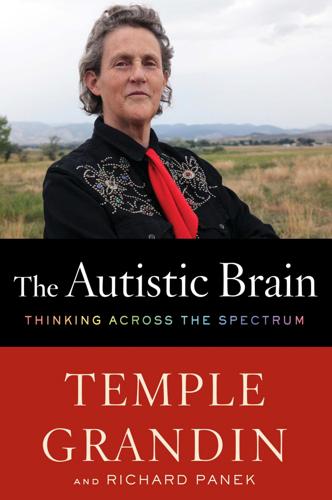
The Autistic Brain: Thinking Across the Spectrum
by
Temple Grandin
and
Richard Panek
Published 15 Feb 2013
Actually, I’ve been inside the future—a radically new version of DTI called high-definition fiber tracking. HDFT was developed at the Learning Research and Development Center at the University of Pittsburgh. Walter Schneider, senior scientist at the center, explains that HDFT was underwritten by the Department of Defense to investigate traumatic brain injuries: “They came to me saying, we need something that can do for brain injury what X-rays do for orthopedic injury.” When the research team posted a paper on the Journal of Neurosurgery’s website in March of 2012, the technology got a fair amount of media attention. The paper reported on the case of a thirty-two-year-old male who had sustained a severe brain injury in an all-terrain-vehicle accident.
…
most people—including researchers in the field—can’t give you the details.” Including researchers in the field? Really? “A fuzzy image of bones doesn’t give you a clean diagnosis,” Schneider says. “We took diffusion tensor imaging, and made it so it can.” While the focus of HDFT research so far has been on traumatic brain injuries, Schneider’s long-range plan is to map the information superhighways of the brain. For years I’ve compared the circuitry of the brain to highways, and I’m hardly alone. But the high-definition part of HDFT technology has revealed just how apt the superhighways reference is. Regular DTI technology shows the highways and off-ramps and crossroads of your brain as if they were all on a two-dimensional map.
…
Wolff et al., “Differences in White Matter Fiber Tract Development Present from 6 to 24 Months in Infants with Autism,” American Journal of Psychiatry 169, no. 6 (June 2012): 589–600. [>] “They came to me”: Walter Schneider interview. [>] posted a paper: S. S. Shin et al., “High-Definition Fiber Tracking for Assessment of Neurological Deficit in a Case of Traumatic Brain Injury: Finding, Visualizing, and Interpreting Small Sites of Damage,” Journal of Neurosurgery 116, no. 5 (May 2012): 1062–69. [>] my book Emergence: Temple Grandin and Margaret M. Scariano, Emergence (New York: Warner Books, 1996). [>] “It really, really”: Virginia Hughes, “Movement During Brain Scans May Lead to Spurious Patterns,” Simons Foundation Autism Research Initiative, January 16, 2012, http://sfari.org/news-and-opinion/news/2012/movement-during-brain-scans-may-lead-to-spurious-patterns. [>] an article in Science: Greg Miller, “Growing Pains for fMRI,” Science 320 (June 13, 2008): 1412–14. 3.

Neurodiversity at Work: Drive Innovation, Performance and Productivity With a Neurodiverse Workforce
by
Amanda Kirby
and
Theo Smith
Published 2 Aug 2021
For example, someone might see numbers and automatically strongly feel that each number is associated with a particular colour or someone might hear a particular noise, such as a trumpet, and automatically see a green circle. Tactile: To do with touch. TBI: This stands for Traumatic Brain Injury. Tic Disorders: A term which includes Chronic Tic Disorder and Tourette’s Syndrome. Tics: The production of sudden, repetitive, non-rhythmic involuntary (automatic) movements, sounds and/or words. These include clapping, blinking, head jerking, repeating/echoing words or involuntarily saying taboo words or phrases. Tourette’s Syndrome: A condition characterized by motor (movement) and vocal tics that have lasted for more than one year. Traumatic Brain Injury: Any injury to the brain that is the result of physical trauma, eg a blow or fall.
…
In H R Mykelbust (ed), Progress in Learning Disabilities, Ulverscroft, New York, USA, pp 235–64 12 Badian, N A (1999) Persistent arithmetic, reading, or arithmetic and reading disability, Annals of Dyslexia, 49, pp 43–70 13 Shalev, R S et al (2000) Developmental dyscalculia: prevalence and prognosis, European Child & Adolescent Psychiatry, 9 (Suppl 2), II58–II64, https://doi.org/10.1007/s007870070009 (archived at https://perma.cc/4TFV-Z6AS) 14 Lingam, R et al (2009) Prevalence of Developmental Coordination Disorder using the DSM-IV at 7 years of age: a UK population-based study, Pediatrics, 123, e693–e700 15 Lindsay, G and Strand, S (2016) Children with language impairment: prevalence, associated difficulties, and ethnic disproportionality in an English population, Frontiers in Education, 1 (2) 16 Scahill, L, Specht, M and Page, C (2014) The prevalence of tic disorders and clinical characteristics in children, Journal of Obsessive-Compulsive and Related Disorders, 3 (4), pp 394–400. https://doi.org/10.1016/j.jocrd.2014.06.002 (archived at https://perma.cc/C77X-L3VA) 17 Knight, T et al (2012) Prevalence of tic disorders: a systematic review and meta-analysis, Pediatric Neurology, 47 (2), pp 77–90 Glossary ABI: This stands for Acquired Brain Injury. Acquired Brain Injury: Any injury to the brain. This includes Traumatic Brain Injury but also stroke, encephalitis, brain cancer, hypoxia, poisoning, substance abuse and other brain injuries. ADD: This stands for Attention Deficit Disorder. ADHD: This stands for Attention-Deficit/Hyperactivity Disorder. AS: This stands for Asperger’s Syndrome. ASD: This stands for Autism Spectrum Disorder also known as ASC.
…
Access to Work scheme (DWP, UK) 15, 91, 93, 99, 114, 122, 163, 183, 193 acquired brain injury (ABI) 294 ADHD (attention-deficit/hyperactivity disorder) 282–83, 294 access to support and services 41–42 hyperactive/impulsive type 70 inattentive (dreamy) type 70 male bias in diagnostic criteria 69–71 parenting style and 23 spiky profiles 45–54 adjustments see reasonable adjustments; workplace adjustments Admiral Insurance, inclusive culture (case study) 228–31 adversity, cumulative adversity over time 68–71, 84 affinity 224 AI assessment 57, 153 air traffic controllers, pre-selection testing 155 Amazon 57 Applied Behavioural Analysis (ABA) 261 apprenticeships 125–36 Argyris, Chris 263 ascertainment bias 69–70 ASD see autism spectrum disorder Asperger, Hans 32 Asperger’s syndrome (AS) 32, 128–29, 294 Aspire2inspire Dyslexia CIC 71–72 assessment (related to recruitment) 137 approach to assessments and skill tests 149–51 assessment paradigm 56–57 future developments 151–56 game-based assessments 152, 153–54, 155 use of work samples 146, 147, 149 validity of methods used 143–47 when hiring diverse talent 147–49 assessment, diagnostic see diagnosis attention deficit disorder (ADD) 294 auditory discrimination 294 Austin, Paul 193–95 autism-friendly companies, Autotrader (case study) 87–91 autism spectrum condition (ASC) 284–86 autism spectrum disorder (ASD) 32, 284–86, 294–95 male bias in diagnostic criteria 69–71 parenting style and 23 spiky profiles 45–54 stereotyping of people with 44 variability within the diagnosis 41 Autotrader (case study) 87–91 Bandura, Albert 50 Banji, Milimo 82, 237–39 Barrett, Lincoln (AKA High Contrast) 26–27, 63–66, 236 barriers to entry 62, 75, 79 Barron, Christopher 203 BBC, Cape neurodiversity initiative (case study) 203–07 Beetham, Janette 242–44 belonging and inclusion 224–25 bias awareness of developmental coordination disorder (dyspraxia) 70–71 in the recruitment process 114–15, 143–47 Billington, Paul 228–31 biopsychosocial model 33, 165–66, 295 Blau, Abram 30 blended working 114 Blume, Harvey 5, 298 Boorman, Bill 54–55, 81 brain scans 153 British Sign Language 214 Bronfenbrenner, Urie 33 Brookes vs the Government Legal Service (2017) 101 bullying in school 26, 198 Buro Harpold 249 CAI, Autism2Work (A2W) programme (case study) 128–29 camouflaging 70, 295 case studies becoming autism-inclusive at Microsoft 127 CAI Autism2Work programme 128–29 Dyllan Rafail 193–96 Elizabeth Takyi 71–72 Helen Arnold Richardson 75–77 Helen Needham (neurodiversity inclusion at work) 179–81 Hunter Hanson (perspective on interviews) 138–40 inclusive culture at Admiral Insurance 228–31 interviewing and selection methods (Kangas and Vlastelica) 143–45 Jenny McLaughlin 123–24 Leena and Sean at the BBC 203–07 Lincoln Barrett (AKA High Contrast) 63–66 Ravensbourne University 250–52 Shelley Winner 77–81 Umbrella Project, ADHD Foundation 123–24 untapped potential at IBM 193–96 categorization, implications of categorizing people 40–44 champions misuse of 261–62, 266 role of neurodiversity champions 239–42, 243–44 change management, MAD abilities and 52–53 Choudhury, Atif 268–71 chronic tic disorder (CTD) 295 Cleaton, Mary 23 Cockayne, Anne 141, 198–99, 201–02 communication, synchronous and asynchronous 134–35 communities, building and engaging with 236–39, 244 comorbidity 295 compensating 295 ComputerAid 116 conferences after the event 215 ask delegates for ideas about adjustments or specific support 212–13 break and lunch times 215 content and form of the day 214–15 data confidentiality 215 feedback from attendees after the event 215 guidance for presenters 213 key points 220 on the day 214 planning the conference 212 planning to be neuroinclusive 209–15 speakers and form of delivery 211–12 the space and the place 213 Universal Design 213 when you do not know anyone there 209–10 contract work 116 co-occurrence of medical conditions 43, 295 Cooper, Ross 254 Corrie, Clare 202–03 Covey, Stephen 28 Covid-19 pandemic, impacts of 13, 119–20, 153 creative industries, neurological diversity in 236–37 creative thinking, spiky profiles and 44, 52 Crenshaw, Kimberlé 84 criminal activity, loss of potential talents to 74–75 culture add 147–48 culture fit 147–48 Deficits in Attention, Motor Control and Perception (DAMP) 43 Delaney, Diane 195 Deloitte 12 developmental coordination disorder (DCD) 70–71, 288–89, 295 developmental dyscalculia see dyscalculia developmental dyslexia see dyslexia developmental language disorder (DLD) 73–74, 289–90, 295–96, 296–97 diagnosis access to support and services 31, 41–43 challenging the validity and usefulness of labels 29 cumulative lifetime effects of lack of identification 71–72 heterogeneity within labels 43 homeless people and rough sleepers 73 impact of a later diagnosis 34–36, 71–72 implications of categorizing people 40–44 male bias in diagnostic criteria 69–71 medical versus social model 22–23 positive and negative aspects of 32–34 reasons for missed diagnosis in childhood 72–74 reasons why people miss out on 68 uncertainty and diversity within categories 41 under-represented groups 72–73 undiagnosed people in prisons 73–74 waiting times for diagnostic assessments 42 why we like labels 28–29 Diagnostic and Statistical Manual of Mental Disorders (DSM) 31–32, 296 diagnostic classification systems 31–32 digital assessment technology 154–55 digital poverty 154–55 direct discrimination 100, 101–02 disability concept in the social model 95–96 definition in the Equality Act (2010) 97–98 disclosure of 98–99, 160–61, 197–98, 199 Disability Confident employers 121 Disability Discrimination Act (1995) 95 disability employment gap 12–13 disclosure of disability 98–99, 160–61, 197–98, 199 discrimination by association 102 direct discrimination 100, 101–02 Human Rights Act (1998) 104 indirect discrimination 101–02 key legislation against 95–99 diversity 225 business case for 225 business performance and 12 definition of 222–23 Diversity and Ability (D&A) 268–71 diversity policy 117 DNA assessments 153 Do-IT Neurodiversity Profiler 45–46, 56, 76–77 Doyle, Nancy 257–68 Drucker, Peter 16 DSM see Diagnostic and Statistical Manual of Mental Disorders dyscalculia 176, 287–88, 296 dysgraphia 296 dyslexia 286–87, 296 assessment paradigms and 56–57 diagnostic uncertainties 41 Elizabeth Takyi (case study) 71–72 rates among people in prisons 48, 50 spiky profiles 45–54 stereotyping of people with 44 dyspraxia 296 see also developmental coordination disorder (DCD) Early Symptomatic Syndromes Eliciting Neurodevelopmental Clinical Examinations (ESSENCE) 43 education reasons for lack of educational progress 72 reasons why people miss out on 68–71 ‘school to prison’ pipeline 73–74 Education, Health and Care Plan (ECH) 296 Edwards, Rob 253–54 eliminating kryptonite (removing barriers to entry) 62 elitism 258–59, 263 emotional intelligence 224 empathy 114–15, 118, 224 employers ‘ban the box’ campaign 75 criminal record background checks 75, 79–80 duty under the Equality Act (2010) 96 equality provision legislation 13–14 ethical, moral and legal responsibilities 12–13 job adverts and attracting new talent 14 neuro-complementary teams 16 neurodiversity among your current employees 117–18 positive action 99 responsibility to make workplace adjustments 163 retaining the talent that you have 14–15 scenarios to test neurodiversity knowledge and actions 109–10 untapped potential of neurodiverse talent 15–16 why they should be more neuro-inclusive 12–16 see also reasonable adjustments; workplace adjustments employment see recruitment entrepreneurs, neurodiverse talent 15, 252–55 Equal Pay Act (1970) 95 equality definition of 158, 222 distinction from equity 158, 222 Equality Act (2010) UK 13, 92, 95–99, 160–61 disclosure of disability 98–99 duty of employers 96 harassment 102–03 main features of 96–97 protected characteristics 96–97 reasonable adjustments 96 victimization 103–04 what is included as a disability 97–98 equity 158, 222, 225 Evenbreak 116 Exceptional Individuals 116 executive function 296 executive function deficit 296 expressive language 296 expressive language disorder 296–97 eye contact 114–15, 141 Facebook 261 family life, strain of long waiting times for diagnostic assessments 42 Fitzgerald, F Scott 22 Fraser, Keith 34–36, 72 future of work 247–55 balancing out neurodivergent strengths and challenges 254–55 educational preparation for 250–52 entrepreneurship and neurodiversity 252–55 inclusive environments and accessibility 249–50 key points 255 Ravensbourne University (case study) 250–52 Gallup vs Newport City Council (2013) 92 game-based assessments 152, 153–54, 155 gender bias consequences for many undiagnosed adult females 71–72 diagnosis of neurodivergent traits 69–71 language used in job descriptions 118–19 perceived differences in neurodivergent traits 69–71 view of divergent behaviours in others 70 Genius Within CIC 257, 263–64 Google, Project Aristotle 228 Grant, Adam 156 Grayling, Chris 50 groupthink 148 Hacking, Ian 30 Hanson, Hunter, perspective on interviews (case study) 138–40 harassment 102–03 Health and Safety at Work etc Act (1974) 104–05 Heathrow Airport, Disability Network 123–24 Hewitt, Jean 249–50 Hewlett, Katherine 254 hidden disability sunflower scheme 90 High Contrast (electronic music producer and DJ) see Barrett, Lincoln Highhouse, Scott 144 hiring managers, supporting those with spiky profiles 55 hiring schemes 125–36 Hobbs, Lucy 236 homeless people and rough sleepers 73, 81 hot desking 120, 169 Human Rights Act (1998) 104 hyperactivity 297 IBM, untapped potential (case study) 193–96 ICD see International Classification of Diseases impulsive behaviours 297 inclusion Alan Kriss and inclusive talent management 271–73 Atif Choudhury and Diversity and Ability (D&A) 268–71 changing concept of neurodiversity 256–57 definition of 221–22 diversity and 222–23 diversity and inclusion champion Paul Sesay 273–78 Nancy Doyle on neurodiversity at work 257–68 Inclusive Companies 273, 274, 275 inclusive workplace 221–44 Admiral Insurance (case study) 228–31 all-inclusive approach 223–25 belonging and inclusion 224–25 big companies and small companies 242–44 bringing your whole self to work 228 building and engaging with communities 236–39, 244 business case for diversity 225 caring has currency 225 defining inclusion 221–23 future of 247–55 how to be inclusive 227 how to succeed as 225–28 influence on employee wellbeing 224–25 neurodiversity awareness training 242–44 neurodiversity champions 239–42, 243–44 neurodiversity networks 231–35, 243–44 recruitment and 224 support groups 227 valuing and respecting differences 223–25 indirect discrimination 101–02 individual development plan (IDP) 297 induction 183–96 Access to Work scheme 193 appropriate and timely support 183–85 changes over time 192 clarify what the job is and what the rules are 190–91 considerations when carrying out 190 finding your way around 191–92 getting started 190 getting support in place 192 integration into the workplace 188–89 key points 196 level of involvement of the new employee 193 mentoring support 192–93 neurodiversity awareness training 189–90 neurodiversity champions 192–93 ‘non-rules’ (unspoken rules) of the organization 191 preparation for the start of a new job 183–85 purpose of 185–88 see also onboarding induction meeting 167 intellectual disability (ID) 297 International Classification of Diseases (ICD), WHO 31, 297 International Classification of Functioning, Disability and Health (ICF), WHO 33, 166 International Labour Organization 95 internships 125–36 intersectionality 29, 84 interviewers, check your internal dialogue 150–51 interviews 137–56 designing the interview process 137–38 future developments 151–56 hurdles faced by candidates 137–38 identifying the important skills for a role 142–45 myth of the perfect candidate 140–41 perspective of Hunter Hanson (case study) 138–40 remote interviewing 138 structured interviews 146 validity of interviewing and selection methods 143–47 IQ (intelligence quotient) 297 job adverts 118–20, 122 job crafting 202 Kangas, Mathea 142–45 Kanner, Leo 23 Kelly, Kirstie 1–2 kinaesthesia 297 Klass, James 274 Kriss, Alan 271–73 Kumulchew v Starbucks Coffee Company UK Ltd (2017) 101 labels 21–37 access to support and 22 biases relating to 23 challenging the terminology 27–28 challenging the validity and usefulness of 29 changes over time 31–32 changing perceptions of human variability 30–31 definition and scope of neurodiversity 24–27 diagnostic classification systems 31–32 enabling conversations about neurodiversity 22–24 getting the terminology right or wrong 23–24 impact of a later diagnosis 34–36 positive and negative aspects of diagnosis 32–34 social perceptions of 32–33 why we like them 28–29 see also categorization; diagnosis language changing perceptions of human variability 30–31 different meanings of words to different people 27–28 labels 21–37 learning disabilities and difficulties (LDD) 297 learning disability (LD) 297 left-handedness, changing perceptions of 30–31 legislation equality provision 13–14 importance that employers know about 96 workplace policies and procedures 86–111 Leonard, Jamie 1 line management BBC neurodiversity initiative (case study) 203–07 confidentiality issue 200–01 discussion with the wider team 200–01 employee decision about disclosure to 197–98 employee diagnosis disclosure and access to support 199 having good conversations with employees 197–207 key points 207 learning from shared experiences 203 making reasonable adjustments 201–02 role of HR in guiding the manager 200 starting a conversation and getting it right 198–207 support for managers 199–200 training in relation to neurodiversity 107, 201–03 LinkedIn 202–03 literacy difficulties, factors contributing to 50 MAD abilities (Moving Attitudes towards Diverse abilities) 46–53 managers see line management masking 70 McDowall, Almuth 264 McGrath, James 44 McLaughlin, Jenny (case study) 123–24 McLeod vs Royal Bank of Scotland plc (2016) 100 medical model 22–23, 31, 43, 298 meetings consider recording meetings 219 consider who has not participated and the reasons why 219 copies of meeting notes or presentations 219 face-to-face meetings 216–17 gain feedback about being inclusive 219 have a facilitator 218–19 key points 220 length of the meeting 218 offer closed captioning 219 offer different ways to ask questions 219 online meetings 217–19 planning to be neuroinclusive 209–10, 216–20 provide information before the meeting 218 set the ground rules at the start 218 webinars 217–19 mental health first aiders (MHFAs) 242, 266 mental retardation 298 Microsoft 91 becoming autism-inclusive (case study) 127 Milton, Damian 114 Minimal Brain Dysfunction 43 misophonia 298 mixed receptive-expressive language disorder 298 Muench, Nick, Autism2Work programme (case study) 128–29, 130 multiple tic disorder 290–92 music industry, neurological diversity in 236–37 National Autistic Society (NAS) 87–91 National Diversity Awards 273, 274–75 Needham, Helen (case study) 179–81 neurodevelopmental disorders (NDD) 298 neurodisability (ND) 298 neurodivergence 25, 298 neurodiversity 298–99 as variability of human brains 40 categorization and 40 changing concept of 256–57 definition and scope of the concept 24–27 diagnostic uncertainties 41 Judy Singer’s concept of 278 origin and meaning of the term 2–6 prospects for the future 279 scenarios to test employer knowledge and actions 109–10 strengths and challenges approach 42–44 understanding among university students 82–83 what the concept means to different people 16–19 why it is important for organizations 10–19 neurodiversity policy 117 neuroqueer 299 neurotypical 25 NICE (National Institute for Health and Care Excellence), UK 164, 227 non-stimulant medicines 299 Nothing About Us Without Us 239 obsessive-compulsive disorder (OCD) 299 Offord, Jennifer 231–33 onboarding 133–34, 183–85, 196 see also induction parenting and neurodiversity in children 23 PAS 6463: ‘Design for the Mind: Neurodiversity and the built environment’ (BSI) 250 performance appraisals 105–08 adaptations for a dyslexic employee (possible scenario) 110 dealing with poor work performance (possible scenario) 109 person-centred approach 165–66 personality assessments 146 pervasive developmental disorder – not otherwise specified (PDD-NOS) 299 phenotypes 43 phoneme 299 phonology 299 pragmatics 299 pre-employment stage, loss of cognitively diverse demographics 68–84 prison population employment challenges after release 74–75, 79 Helen Arnold Richardson (case study) 75–77 levels of undiagnosed DLD 73–74 rates of neurodiverse traits 48, 50 ‘school to prison’ pipeline 73–74 Shelley Winner (case study) 77–81 Pritchard, Gary 250–52 proprioception 299 psychological safety 228 psychometric assessments 53–54, 101, 147 psychostimulant medicines 299 PwC 223 Race Relations Act (1976) 95 Rafail, Dyllan (case study) 193–96 Ravensbourne University (case study) 250–52 reasonable adjustments (made by employers) 15, 24–25, 100, 103, 116, 117, 121 duty of employers 96 individual situations 201–02 performance appraisals and 105–07, 110 see also workplace adjustments receptive language 299 Recruiting Toolbox 142–45, 148 recruitment process accessibility of the application process 120 alternative application process 120 alternative working arrangements 119–20 alternatives to a CV 121 assessment paradigms 56–57 attracting neurodiverse talent 113–24 bias in 114–15 bidirectional communication strategy 114–15 candidate experience 114–15 candidates’ confidence to sell their strengths and abilities 56 challenges for neurodiverse candidates 129–30 challenges for people with spiky profiles 53–58 challenges of looking for a job 113 check for inadvertent bias in job adverts 122 disability employment gap 12–13 general guidelines 117–22 impact of having a criminal record 74–75, 79 inclusion and 224 information about your company 122 job descriptions 113 key points 124 language used in job adverts 118–20, 122 language used relating to work 113 making workplaces more inclusive 1–2 means of disclosure of support needs 121 recognition of different strengths 54–58 rethinking how we recruit 151–56 supporting those with spiky profiles 55 technology to support recruitment and HR 122 Umbrella Project (case study) 123–24 untapped potential at IBM (case study) 193–96 use of consultants and advisory/support groups 118 validity of interviewing and selection methods 143–47 ways to encourage neurodiverse applicants 116 website accessibility 120 why some people are excluded 11–12 working from home 119–20 see also apprenticeships; hiring schemes; internships; interviews; work placements references, writing for an employee with disabilities (possible scenario) 109–10 referral, gender bias in 69–70 Richardson, Helen Arnold (case study) 75–77 Right Resources 242 Robbins, Mike 228 Robison, John Elder 114–15 rough sleepers 73 Saxon, Yvonne 92–94 Sayers, Dorothy L 40 self-confidence 26, 56 self-efficacy 50 self-stimulatory behaviour 300 semantics 300 seminars, neuroinclusive 209–10, 217–19, 220 Sesay, Paul 273–78 Sex Discrimination Act (1975) 95 Singer, Judy 5, 262, 278, 298 Skarsgård, Stellan 154 small and medium-sized enterprises (SMEs), entrepreneurship and neurodiversity 252–55 social identity, intersectionality and cumulative adversity 84 social media, building and engaging with communities 236–39, 244 social model 22–23, 43, 95–96, 300 Sonne, Thorkil 194 Specialisterne Foundation 116, 193–96, 271–73 specific communication and language needs (SCLN) 289, 296 specific language impairment (SLI) 289, 296, 300 specific learning disability/difficulty (SpLD) 300 spiky profiles 45–58 challenge of the traditional recruitment process 53–58 creative thinking and 44, 52 definition of 40, 45 Do-IT Neurodiversity Profiler 45–46 MAD abilities 46–53 recognition of different strengths 54–58 staff networks 231–35, 243–44 stereotyping 33, 44, 70 stigma 6–8 stimming 300 strengths and challenges, enabling strengths 62–66 see also spiky profiles Sun Tzu 3 sunflower lanyards 123 superheroes, enabling neurodiverse abilities 61–67 superpowers, view of neurodiversity 61–62 support, access to 41–43, 62–84 synesthesia 65–66, 300 Takyi, Elizabeth (case study) 71–72 TapIn organization 82, 237 team working 16, 113–14, 147–48, 228 technology assistive technology 162 IT support strategies 178 opportunities for workplace adjustments 161–62 tools to support recruitment and HR 122 terminology see labels Thompson, Ed 1–2 tic disorders 300 tic spectrum disorder 290–92 tics 301 tokenism 262–63, 264–65 Tourette’s syndrome (TS) 290–92, 301 training champions training 243–44 neurodiversity awareness training 189–90, 201–03, 242–44 staff networks training and support 243–44 traumatic brain injury (TBI) 301 TRUFeeds case study 81 Tsaprounis, Christos 87–91 Umbrella Project, ADHD Foundation 123–24 United Nations, Agenda for Sustainable Development 3–4 Universal 236–37 Universal Design principles 199, 213 universities, understanding of neurodiversity 82–83 van de Haterd, Bas 151–54 Vermeesch, Michael 127 Veulliet, Yves 195, 196 victimization 103–04 Vlastelica, John 142–45, 148 von Koëttlitz, Raphaele 268 webinars 217–19 websites, readability of 170–73 Welch, Florence 236 Wells v the Governing Body of Great Yarmouth High School (2017) 102 Whyte, William H 17 Williams, Andrew 193–95 Williams, Robin 48, 154 Winner, Shelley (case study) 77–81 Wolchin, Rachel 57, 164 work placements 122, 125–36 working from home, neurodiverse advantages and disadvantages 248–49 working memory 301 working memory deficit 301 working remotely 16, 119–20, 170, 247–48 workplace bidirectional communication strategy 114–15 in-work support, Access to Work scheme 122 onboarding processes 113–14 understanding the ‘social rules’ 113–14 see also inclusive workplace workplace adjustments 158–81, 260, 262 Access to Work scheme (UK) 163 arriving at work 168 aspects to consider 164–65 biopsychosocial approach 165–66 consider the individual context 166–67 determining what is reasonable 162–63 distinction between equality and equity 158 employer awareness of duty under the Equality Act (2010) 160–61 examples of 161–62 generic principles 167–81 getting started 163–64 Helen Needham (case study) 179–81 helpful apps and software 178 home working 170 induction meeting 167 IT support strategies 178 key points 181 neurodiversity inclusion at work (case study) 179–81 office working 169 opportunity for innovation and inclusion 159–60 person-centred approach 165–66 responsibility to make the adjustments 163 supporting someone with coordination challenges 176–77 supporting someone with literacy-related challenges 177–78 supporting someone with numeracy challenges 176 supporting someone with organizational challenges 174 supporting someone with social, language and communication challenges 174–76 thinking about accessibility in all that you do 170–73 timely placement of 173 travel to work 168 Universal Design principles 170 use of technology 161–62 websites and written materials 170–73 what they are 160–65 wider positive impacts of 159–60 wording of statements about 164 work environment 168–70 see also reasonable adjustments workplace policies and procedures approach to putting in place 100–05 Autotrader (case study) 87 focus on individual needs 91 key legislation 95–99 key points 110–11 legal issues 86–111 performance appraisals 105–08 putting the policies and procedures in place 92–94 written materials, readability of 170–73 YouTube, ‘The Life Autistic’ video diaries (Hunter Hanson) 138 Publisher’s note Every possible effort has been made to ensure that the information contained in this book is accurate at the time of going to press, and the publishers and authors cannot accept responsibility for any errors or omissions, however caused.
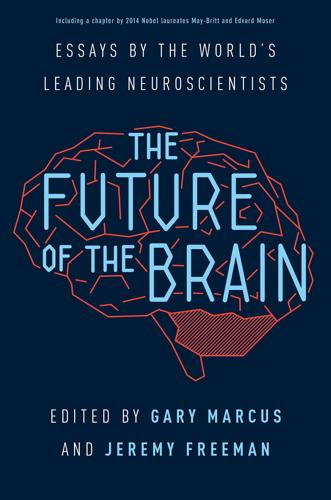
The Future of the Brain: Essays by the World's Leading Neuroscientists
by
Gary Marcus
and
Jeremy Freeman
Published 1 Nov 2014
The BRAIN project was, at the time of its initial announcement, explicitly compared to the Human Genome Project. The hope, says the White House, is that the project will lead to a long list of practical applications, including new ways “to treat, prevent, and cure brain disorders like Alzheimer’s, schizophrenia, autism, epilepsy, and traumatic brain injury.” Two decades ago similar promises—many not yet delivered—swirled around government-funded efforts to map the human genome. What can our experiences with the genome project tell us, practically—and ethically—about projects to map the brain? The Nature of the Two Projects The BRAIN project states that it provides funding to investigators to develop next-generation technologies with the aim of mapping the activity of each of the neurons in the brain.
…
Because of their high spatial specificity—guided by an externally imposed 3-D radio field—properly designed nanobots can target individual cells anywhere in the brain with enormous precision. Many once-common mental diseases can now be delayed or, in a few cases, cured. To be sure, progress in reducing morbidity and mortality of brain-based pathologies—tumors, traumatic-brain injury, epilepsy, schizophrenia, Parkinson’s, Alzheimer’s and other forms of dementia—took much longer to realize than anyone conceived of in the early years of the new millennium. (An instructive parallel is the War on Cancer, announced by President Nixon in 1971, when America was flush with the success of the lunar landing; it was nearly five decades before there was a significant decline in the actual death rates for cancer, while death rates for respiratory, infectious, and cardiovascular diseases had plummeted much earlier.)
…
See also Human Brain Project (HBP); SyNAPSE project (IBM); whole-brain simulation simulome, 183 Skinner’s behaviorism, 206 Sligte, Ilja, 166 Smith, Stephen, 14 Society for Neuroscience, 258 Solstad, Trygve, 75 songbirds: FOXP2 gene, 155–56 Spaun (Semantic Pointer Architecture Unified Network): architecture of model, 130f; behavior and brain model, 126–27, 129, 131–32; flexible coordination, 132–33; neural firing patterns, 129; neurons, 127; reverse engineering, 133–34; serial working memory task in, 128f, 131 speech, 140; computational neuroanatomy of, 146; FOXP2 gene mutation, 151–52, 155; information, 145; perception, 144–46; production, 146, 187, 190 spinal cord injury, 229 Sporns, Olaf, 11, 65, 90–99 standard operating procedures (SOP), 33 star-nosed mole, 187 Stensola, Hanne, 72 Stensola, Tor, 72 stimulation: electrical, 11, 79, 195, 225–26 stroke, 229, 243 style computing, 213 subjective feelings, 269 Südhof, Thomas, 207 supercomputer: human brain as, 94 supervised learning, 206 SyNAPSE project (IBM): brain simulation, 125–26 synaptic connections: brain, 50 synaptic plasticity, 119, 221, 241 synaptic proteins: in situ immune microscopy of, 60–61 synchronization: neuronal interactions, 93 syntactic theory: language computations, 143–44; minimalism, 144 syntax, 140, 141, 147–48 Talairach, Jean, 5 Talairach Atlas, 10 Tank David, 19 Taube, Jeff, 75 Technical University of Munich, 121 technological innovation, 79 Thunder, 104 Tonegawa, Susumu, 259 top-down modeling, 85f, 112, 162, 171f, 267 touch receptors, 67 Tournoux, P., 5 transcranial magnetic stimulation (TMS), 228 transcriptome, 48 transducer, 246, 250 transistor, 82, 84, 85f, 86–88, 135, 177, 181, 183, 210, 221, 245, 250 traumatic brain injury, 194, 266 trilevel hypothesis: brain, 84–85 Tsuchiya, Nao, 168, 169 tuberculosis, 171 tuberous sclerosis, 241 tumors, 266 Turing machine, 26 23andMe, 198 Twitter, 103 two-photon imaging: mouse cortex, 107 two-photon microscopy, 32 two-photon tomography, 34 ulcerative colitis, 234 ultrasonic frequencies, 246 ultrasonic waves, 249 ultrasound, 250 Universidad Politécnica de Madrid, 116 University College London, 122, 177 University of California–San Diego, 177 University of Edinburgh, 115 University of Oslo, 115, 116 US BRAIN Initiative, 113, 124 US Human Connectome Project, 113 Vallortigara, Giorgio, 207 Vandenbroucke, Annelinde, 166 Van Essen, David, 12 variable binding: brain, 213–14; language, 212 Venter, Craig, 256 Vesalius, Andreas, 3, 4f vestibular system, 22 virtual brains: building, 97–99 virtual reality: whole brain neuroimaging and, 17–24 vision: restoration, 227, 230 Vision (Marr), 181 visual processing: stimuli, 163 visual responses: brute-force data collection, 105 visual-spatial extinction, 163–64 visual system: primates, 104–5 visual thalamus, 264 Vogt, Karl, 91 Vogt, Marthe, 4 von Economo, Constantin, 4 von Neumann, John, 208, 212–13 V2 neurons: hypothesis, 105–6 Waddington, Conrad, 189 Watson, James, 7, 46 Waxholm Space, 115 Werbos, Paul, 41 White, John, 12 whole-brain neuroimaging, 20–21, 17–24 whole-brain neuroscience: behavior as brain output, 121–22; building the brain, 118–19; ethics, 123; global collaboration, 123–24; global effort to understand brain, 124; modeling brain disorders and diseases, 122; unifying brain models, 120–21; validity of model, 119–20 whole-brain simulation: creating to understand, 111–13; neuroinformatics for computing, 113–15; next generation brain atlases, 115–17; ongoing debate, 267–68; predictive neuroscience, 117–18.
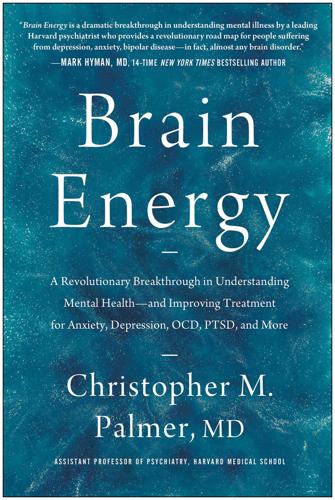
Brain Energy: A Revolutionary Breakthrough in Understanding Mental Health--And Improving Treatment for Anxiety, Depression, OCD, PTSD, and More
by
Christopher M. Palmer Md
Published 15 Nov 2022
These are special lights that are 10,000 lux (a measure of light intensity) that mimic exposure to sunlight but are generally safe on the eyes. Bright-light therapy has been used in a wide variety of disorders, including seasonal affective disorder, bipolar disorder, major depression, postpartum depression, insomnia, traumatic brain injury, and dementia.15 Interestingly, light exposure might even play a role in treating obesity, diabetes, and cardiovascular disease.16 Light therapy can help to regulate your circadian rhythms and normalize your sleep, which, as you now know, can have powerful effects on your metabolism and mitochondria.
…
I should warn you that I have seen some patients with bipolar disorder develop hypomania and even mania from bright-light therapy, so please use it cautiously if you have had mania in the past. I also mentioned brain photobiomodulation. This is still considered experimental but is being studied for a variety of conditions, such as dementia, Parkinson’s disease, stroke, traumatic brain injury, and depression. Summing Up •Sleep, light, and circadian rhythms are all interconnected. •They all play a powerful role in metabolism, mitochondrial function, mental health, and metabolic health. •Diagnosing the cause of sleep problems is important, as it may require specific treatments.
…
and brain development in causing mental disorders and depression and diet health and in hormone levels purpose in life stress psychological stress psychological theories psychosis contributing causes of and neurotransmitters other problems associated with risk genes for treatment for psychosomatic medicine psychotherapy psychotic disorders. see also specific disorders contributing causes of and other disorders psychotic symptoms purpose in life. see also psychological and social factors R Rahe, Richard randomized controlled trials rate of living theory reactive oxygen species (ROS) rehabilitation programs relationships of medical and mental disorders. see also brain energy theory and definition of mental illness examples of and limited metabolic resources metabolic disorders neurological disorders organic mental disorders and pain and reasons for disorders stress and the stress response and symptoms of mental illness relationships with people. see also psychological and social factors relaxation response (RR) religious practices and spirituality Research Domain Criteria (RDoC) residential treatment programs “Resource Document on Neuroimaging” (American Psychiatric Association) reverse causation risk factors affecting many mental disorders for depression for heart attacks for mental disorders (see also contributing causes of mental illness) for metabolic disorders for neurological disorders root cause common of metabolic disorders of mitochondrial dysfunction S Schatzberg, Alan schizoaffective disorder contributing causes of other disorders and risk for schizophrenia and cardiovascular disease contributing causes of diagnosis of ketogenic diet for and obesity and other disorders rates of risk for and risk of Alzheimer’s disease treatments for seasonal affective disorder “serious” mental disorders serotonin shame signs of disorders sleep and depression and mitochondrial function problems with and psychotic symptoms and social isolation and symptoms as treatment social determinants of health social factors. see psychological and social factors social stress starvation statistics stigma stress. see also trauma burnout from and depression with mental disorders with metabolic disorders metabolic resources affected by and other disorders oxidative physical psychological and social stress granules stressors stress reduction practices stress response stroke contributing causes of other disorders and and peptides treatment for substance use disorders. see also drug and alcohol use and brain functions contributing causes of delirium with withdrawal in and other disorders prevalence of risk for successful treatments. see also metabolic treatment plan suicide contributing causes of and other disorders prevalence of symptomatic treatments symptoms of Alzheimer’s and brain function defined of diabetes effect of sleep, light, and circadian rhythms on of epilepsy heterogeneity of of major depression of mental disorders/illness 114 of metabolic disorders negative normal emotions or experiences as of organic mental disorders overlapping of psychotic disorders treating disorders instead of variability in of vitamin deficiency syndromes T technology and screens telomeres testosterone theories. see also brain energy theory thrifty phenotype hypothesis thyroid hormone Tourettes syndrome transcranial magnetic stimulation (TMS) trans fatty acids (TFAs) trauma. see also abuse trauma response, brain functions and traumatic brain injury treatments for mental disorders. see also individual disorders diet as estrogen as exercise/physical activity as genetics and epigenetics related to ineffective insulin in medical disorders related to metabolic treatment plan metabolism affected by psychological and social factors addressed in role of inflammation in sleep, light, and circadian rhythms as successful symptomatic thyroid hormone as U unfolded protein response (UPR) US National Comorbidity Survey Replication V violence vitamins Volkow, Nora W Wallace, Douglas weight causes of gaining and epilepsy and gut microbes and medications weight loss treatment Wilder, Russell World Health Organization Y Yehuda, Rachel About the Author Christopher M.

Critical: Science and Stories From the Brink of Human Life
by
Matt Morgan
Published 29 May 2019
Although I normally offer an easy answer, such as I enjoy running or reading, the truth is far more complex. I was recently working when a severely injured nineteen-year-old cyclist was brought to the ICU. She was a student and had been hit at high speed by a van while riding home after lectures. She was critically ill with a traumatic brain injury, a pelvic fracture and multiple chest injuries. It took hours of work for our team to stabilise her condition, which involved performing difficult, bloody, practical procedures, co-ordinating multiple surgical specialists and speaking to her distraught family. That evening, I inevitably left work late and cycled myself the nine miles home along narrow country lanes towards the Welsh coast.
…
A Pilot Multicenter Randomized Controlled Trial. American Journal of Respiratory and Critical Care Medicine 193, 43–51 (2016). ‘. . . a decompressive craniectomy does produce more survivors, but with an increased likelihood of severe, profound disability overall.’ Cooper, D. J. et al. Decompressive Craniectomy in Diffuse Traumatic Brain Injury. N Engl J Med 364, 1493–1502 (2011). ‘. . . gel-like material produced by bacteria (a biofilm) forms around the plastic of breathing tubes.’ Sands, K. M. et al. Respiratory pathogen colonization of dental plaque, the lower airways, and endotracheal tube biofilms during mechanical ventilation.

The Coddling of the American Mind: How Good Intentions and Bad Ideas Are Setting Up a Generation for Failure
by
Greg Lukianoff
and
Jonathan Haidt
Published 14 Jun 2018
He found that their scope had expanded in two directions: the concepts had crept “downward,” to apply to less severe situations, and “outward,” to encompass new but conceptually related phenomena. Take the word “trauma.” In the early versions of the primary manual of psychiatry, the Diagnostic and Statistical Manual of Mental Disorders (DSM),17 psychiatrists used the word “trauma” only to describe a physical agent causing physical damage, as in the case of what we now call traumatic brain injury. In the 1980 revision, however, the manual (DSM III) recognized “post-traumatic stress disorder” as a mental disorder—the first type of traumatic injury that isn’t physical. PTSD is caused by an extraordinary and terrifying experience, and the criteria for a traumatic event that warrants a diagnosis of PTSD were (and are) strict: to qualify, an event would have to “evoke significant symptoms of distress in almost everyone” and be “outside the range of usual human experience.”18 The DSM III emphasized that the event was not based on a subjective standard.
…
Such posts are shared widely by children of the 1970s (like us), because they allow our generation to laugh at the safety concerns of today’s parents and to point out that when we grew up, nobody wore seat belts or bike helmets, most of the adults smoked (even around children), paint and gasoline were leaded, and children were encouraged to go—on their own—to parks and playgrounds, where anyone could kidnap them. While the tone is frequently mocking and dismissive, these posts also highlight some important successes in the pursuit of child safety. Increased use of seat belts has saved many lives,19 bicycle helmets lower the risk of traumatic brain injuries,20 not smoking around children confers many health benefits on the kids,21 and removing lead from paint and gasoline has prevented untold numbers of medical problems and deaths.22 Putting it all together, from 1960 to 1990, there was a 48% reduction in deaths from unintended injuries and accidents among kids between five and fourteen years of age, and a 57% drop in deaths of younger kids (ages one to four).23 The success of childhood safety campaigns helps explain why modern parents often take a concern about safety to the extreme of safetyism.
…
Emotional processing of fear: Exposure to corrective information. Psychological Bulletin, 99, 20–35. Frankl, E. (1959/2006). Man’s search for meaning. Boston, MA: Beacon Press. Ganti, L., Bodhit, A. N., Daneshvar, Y., Patel, P. S., Pulvino, C., Hatchitt, K., . . . Tyndall, J. A. (2013). Impact of helmet use in traumatic brain injuries associated with recreational vehicles. Advances in Preventive Medicine, 2013, 1–6. Ghitza, Y., & Gelman, A. (2014, July 7). The Great Society, Reagan’s revolution, and generations of presidential voting. Working paper. Retrieved from https://static01.nyt.com/newsgraphics/2014/07/06/generations2/assets/cohort_voting_20140707.pdf Ginsberg, B. (2011).
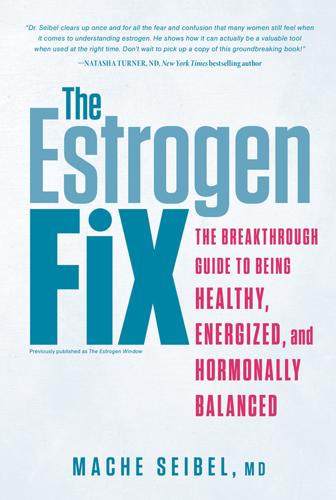
The Estrogen Fix: The Breakthrough Guide to Being Healthy, Energized, and Hormonally Balanced
by
Mache Seibel
Published 18 Sep 2017
Similarly, postmenopausal women who were followed for 10 years with MRI were found to have less brain injury12 caused by poor bloodflow if they were taking hormone therapy. The longer they took estrogen, the less damage was noted. Estrogen’s protective effects on the brain were also observed in both male and female patients who needed emergency resuscitation,13 specifically those with traumatic brain injury, shock, and sudden cardiac arrest. Typically, the entire focus of treating patients in such situations is to get the heart to start beating again or to get the person breathing again; the focus has not been on protecting the person’s brain. When women and men treated for sudden cardiac arrest were also given an intravenous combination of three things—estrogen, a strong antioxidant, and an anti-inflammatory drug—in order to protect the brain and increase survival, brain cell survival of participants treated with this regimen increased by as much as 65 percent.
…
When women and men treated for sudden cardiac arrest were also given an intravenous combination of three things—estrogen, a strong antioxidant, and an anti-inflammatory drug—in order to protect the brain and increase survival, brain cell survival of participants treated with this regimen increased by as much as 65 percent. When doctors gave the same regimen intravenously after traumatic brain injury, they observed similar effects. In a series of studies performed on middle-aged or older animals, increasing estradiol levels increased nerve growth in the hippocampus, increased the growth of capillaries and oxygen flow to the brain, and increased many aspects of learning and memory. Hormone therapy given to postmenopausal women also improved verbal memory.14, 15 The size of the hippocampus is a good indicator of brain health.

Artificial Unintelligence: How Computers Misunderstand the World
by
Meredith Broussard
Published 19 Apr 2018
A few times a month, I took a school bus to the Lockheed plant to meet up with a handful of other teenagers from local schools and learn about engineering. People sometimes say that a computer is like a brain. It isn’t. If you take a piece out of a brain, the brain will reroute pathways to compensate. Think about the traumatic brain injury suffered by Arizona Congresswoman Gabby Giffords in 2011. Giffords was holding a meeting with constituents in the parking lot of a Safeway grocery store when a lone gunman, Jared Lee Loughner, shot her in the head at point-blank range. Loughner next shot blindly around the parking lot, killing six people and wounding eighteen.
…
Doctors performed emergency brain surgery and then put her into a medically induced coma to allow her brain to heal. Four days after the attack, Giffords opened her eyes. She couldn’t speak, she could barely see—but she was alive. Giffords courageously faced the long road to recovery. With intensive therapy, she relearned how to speak. Like most people who suffer this kind of traumatic brain injury, Giffords’s voice was very different than it was before the attack. Her new voice was slower, and her speech sounded labored. Speaking left her tired. Her brain created new pathways that were different than the old, missing pathways. This is one of the amazing things that a brain can do: it can, under very specific conditions and in very specific ways, repair itself.
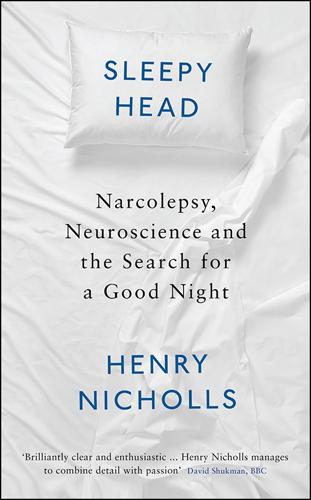
Sleepyhead: Narcolepsy, Neuroscience and the Search for a Good Night
by
Henry Nicholls
Published 1 Mar 2018
p. 141 less than 5 per cent of cases Yves Dauvilliers, Isabelle Arnulf and Emmanuel Mignot, ‘Narcolepsy with Cataplexy’, The Lancet 369.9560 (2007), 499–511. p. 142 log fell on his head Schenck, Bassetti and others. p. 142 violent assaults or sports injuries Hilaire J. Thompson, Wayne C. McCormick and Sarah H. Kagan, ‘Traumatic Brain Injury in Older Adults: Epidemiology, Outcomes, and Future Implications’, Journal of the American Geriatrics Society 54.10 (2006), 1590–5. p. 142 diagnosed as narcolepsy Ennis-Hand, Interview. p. 143 the responsible factor A. Wilson Gill, ‘Idiopathic and Traumatic Narcolepsy’, The Lancet, 237.6137 (1941), 474–476.
…
p. 157 the stain doesn’t stick at all Christelle Peyron and others, ‘A Mutation in a Case of Early Onset Narcolepsy and a Generalised Absence of Hypocretin Peptides in Human Narcoleptic Brains’, Nature Medicine, 6.9 (2000), 991–997, p. 157 hypocretin-producing cells The estimates of the number of hypocretin neurons vary, but this work suggests that in healthy controls there are around 15,000 neurons on each side of the hypothalamus. Christian R. Baumann and others, ‘Loss of Hypocretin (Orexin) Neurons with Traumatic Brain Injury’, Annals of Neurology, 66.4 (2009), 555–59 <https://doi.org/10.1002/ana.21836>. p. 158 the neurotransmitter histamine Joshi John and others, ‘Greatly Increased Numbers of Histamine Cells in Human Narcolepsy With Cataplexy’, Annals of Neurology 74.6 (2013), 786–93; Philipp O. Valko and others, ‘Increase of Histaminergic Tuberomammillary Neurons in Narcolepsy’, Annals of Neurology, 74.6 (2013), 794–804 <https://doi.org/10.1002/ana.24019>. 8 Lost in transition p. 160 thin veil descends Christian Guilleminault, R.
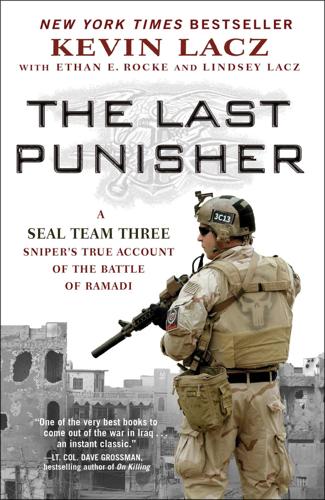
The Last Punisher: A SEAL Team THREE Sniper's True Account of the Battle of Ramadi
by
Kevin Lacz
,
Ethan E. Rocke
and
Lindsey Lacz
Published 11 Jul 2016
With Marc in the careful hands of Dover’s staff, my attention turned to Biggles. We checked into our hotel outside Dover and went to check on our other brother. * * * At Bethesda Naval Medical Center, Biggles was still in a medically induced coma. Just two days had passed since he suffered a traumatic brain injury and extensive damage to his eyes and face. When I walked into his room for the first time, I didn’t know what to expect. I guess I was a little shocked by what I saw. Biggles’s eyes were swollen up to the size of purple golf balls on a patchwork of pink, black, and blue skin. It didn’t feel right.
…
Twenty minutes to get your head in the game. It seemed like part of Biff’s mind was still back stateside. The images of Bethesda, our last stop stateside before we flew out, were sharp in our minds. Less than twenty-four hours earlier, Biggles had woken up and begun dealing with the reality of traumatic brain injury and life without sight. His face was still swollen and bruised. He personally shed the bandages so we could see the extent of his injuries. Admiral Eric T. Olson, the deputy commander of the U.S. Special Operations Command, was there checking in on his Frogmen. The admiral was well liked within the community and that never changed, no matter how high he climbed.
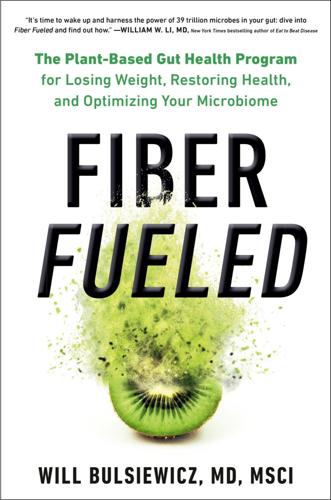
Fiber Fueled: The Plant-Based Gut Health Program for Losing Weight, Restoring Your Health, and Optimizing Your Microbiome
by
Will Bulsiewicz
Published 15 Dec 2020
And how we also discussed above that SCFAs can activate tight junction proteins to repair increased permeability in the gut? Well, it appears that SCFAs work similar magic on the blood–brain barrier. SCFA butyrate has demonstrated a profound effect on improving learning and memory. This has been demonstrated in models of Alzheimer’s, heavy metal toxicity, traumatic brain injury, and even neurologic infections (which sounds terrifying). I will tell you firsthand that the mental clarity that I’ve had since changing my diet has been life changing for me. Being totally real, there’s no way I could’ve written this book before. I didn’t have the stamina, focus, or neural plasticity.
…
See also fermented foods preservatives in foods (chemical), 33, 39 primary biliary cholangitis, 16 primary sclerosing cholangitis, 16 probiotics (healthy bacteria) about, 7, 55, 141 in apples, 79–80 building momentum in, 57–58 impact of, 7 prioritization of, 145 science on, 143 supplements, 137, 141–49, 143–44, 145–46, 195 processed foods, 38, 39, 41–42, 52, 111, 123–24 prostate cancer, 22, 80, 89, 161 proteins America’s obsession with, 43–44, 50 animal proteins, 43–45, 102 plant proteins, 44, 90, 91–92 proton pump inhibitor prescriptions, 32, 37 psoriasis, 16, 109 psoriatic arthritis, 16 psyllium supplements, 139 pumpkins benefits of, 80 Pumpkin Hummus, 276–77 Pumpkin Pie for Breakfast Smoothie, 260–61 purple plants, 81 Puttanesca Tofu Scramble, 286–87 quercetin, 79 Quick Fix recipes, 209, 215 Quick Garlic Broccoli, 331–32 Quick-Pickled Beets, 230–31 rashes, 109, 110 raw vs. cooked foods, 182 recommended daily intake of fiber, 50 Red Lentil Curry Soup, 263–65 red plants, 80 red wine, 189–90 refined carbohydrates, 39, 51–52, 84, 85 reflux, 13 resistant starches, 56, 74, 78, 162, 190–91 respiratory diseases, 83 restless leg syndrome, 16 restrictive diets, xxiv, 45–47, 77, 82 resveratrol, 81, 189–90 Reynolds, Andrew, 64, 65 rheumatoid arthritis, 16, 30, 62–63, 164 rice, 56, 75 Roasted Italian Medley, 241–42 Roasted Vegetables, 296–97 romaine, 157 rye, 85, 111, 113 rye bread, 135 Saag Tofu, 272–74 SAD (Standard American Diet), 37–47, 41–42, 178 salads Buffalo Chickpea Salad, 301–2 Citrus and Mint Salad, 265–66 Daily Salad, 229–30 Down ’n’ Dirty Kale Salad, 233–35 Mediterranean Grain Salad, 291–92 No-Tuna Sunflower Salad, 267–68 Tempeh Tacos and Taco Salad, 236–38 Salmonella, 9, 57, 127 salt, 36, 39, 129, 214 sanitation, 33 sarcoidosis, 16 Sartor, Balfour, 78 satiety hormones, 51, 66, 138, 145–46, 190–91 saturated fats, 43, 46 sauerkraut, 118–19, 120, 129–30, 130–31 scleroderma, 16 seasonal allergies, 16 seaweed, 78, 167–68 second meal effect, 65–66 seeds, omega-3, 158–60, 185 sensitive gut, 95–115 serotonin, 22–23 Sesame Noodle Meal Prep Bowl, 292–94 Seventh-day Adventists, 38 sexual attraction, 21 sexual dysfunction, 22 Shaheen, Nick, xxiii sharing the message about gut healing, 96–97 short-chain fatty acids (SCFAs) about, 54–55 and animal proteins, 102 benefits of, 56, 57, 58–59 building momentum in production of, 57–58 and cancer prevention, 63–65 central importance of, 60 and cognition/brain function, 67–68 and correcting leaky gut, 59–60 and diabetes prevention, 65–66 and diversity of plants consumed, 74–75 and exercise, 197 and gluten-restricted diets, 86 and heart disease prevention, 65, 66–67 and legumes, 89–90, 91 and Paleo diet, 84 and pH of the colon, 120–21 and prebiotic supplements, 138, 140 role of, in immune system, 60–63 and sulforaphane in cruciferous vegetables, 165 and white potatoes, 78 and whole grains, 84, 91 See also butyrate shortness of breath, 13 Simple Overnight Oats, 261–62 sinus congestion, 13 Sjögren’s syndrome, 16 skin health, 13, 80, 157 sleep, 23, 195–96 smoothies Chocolate Peanut Butter Super Smoothie, 287–88 preferred over juices, 188 Pumpkin Pie for Breakfast Smoothie, 260–61 Superfood Smoothie, 225–26 snacks in Fiber Fueled 4 Weeks, 209, 214 Biome Broth, 249–50 Coconut Oat Balls, 250–51 Muhammara Dip, 248–49 Omega-3 Balls, 342–43 Plant-Powered Trail Mix, 277 Pumpkin Hummus, 276–77 Snicker Bites, 345 Speedy Edamame, 310 Turmeric Energy Bites, 310–11 White Bean Hummus, 341–42 Snicker Bites, 345 social media, 198 soil health, 120, 122 soluble fiber, 53, 56, 65, 139–40 Sonnenburg, Justin, 68, 69 sorbitol, 113 soups Biome Broth, 249–50 Nourishing Tomato Noodle Soup, 238–39 Red Lentil Curry Soup, 264–65 Supercharged Miso Soup, 322–23 Tuscan Kale Soup, 335–37 Wild Biome Super Soup, 232–33 source of fiber, importance of, 52 sourdough bread, 126, 135 soy benefits of, 88–89 choosing organic, non-GMO, 89 miso, 132–33 Miso, Mushroom, and Soba Bowl, 271–72 soybeans, 91, 125 soy milk, 89, 126 Speedy Edamame, 310 Supercharged Miso Soup, 322–23 Tempeh Tacos and Taco Salad, 236–38 See also tofu spices and herbs, 160, 211, 213 Spicy Breakfast Tacos, 288–89 spinach, 81, 157 spirulina, 168 Stewart, William, 33 stomach cancer, 81 stool, 10–11, 12, 16–17, 149 Strachan, David, 13 Strawberry Cheesecake Bites, 343–45 stress, 187, 199 strokes and apples, 79 and Fiber Fueled program, xvi role of lifestyle in, 31 and SCFAs’ protective mechanisms, 65 and sleep deprivation, 195 and sulforaphane in cruciferous vegetables, 164 and whole grains, 83 Stuffed Taco Sweet Potatoes, 269–70 sugars, 24, 36, 39, 51, 113 sulforaphane in cruciferous vegetables, 162–66 Sunday Pasta, 337–39 Supercharged Miso Soup, 322–23 Supercharged Roasted Roots, 231–32 superfoods, 151 Superfood Smoothie, with Bowl Option, 225–26 Super Seedy Breakfast Porridge, 223–24 supplements, xiv–xv, 195 sweet potatoes benefits of, 80 Berry Good Sweet Potato Toast, 226–27 Lentil–Sweet Potato Stew, 274–75 Stuffed Taco Sweet Potatoes, 269–70 Talalay, Paul, 163 tamari, 89 taste buds, 175–77 T cells, 39, 61 teas, 56 technologies, advances in, 34 telomeres, xvii tempeh, 133–34 organic, non-GMO, 89 Tempeh Tacos and Taco Salad, 236–38 testosterone (androgens), 20–21, 42 Thai Rainbow Bowls with Peanut Tofu, 297–99 thyroid health, plants that benefit, 78 time-restricted eating (TRE), 193–94 TMAO (trimethylamine N-oxide), 8, 44–46, 67, 69, 84, 104, 190 tofu, 89 Crispy Baked Tofu, 294 Curry Tofu Bok Choy, 243–45 Puttanesca Tofu Scramble, 286–87 Saag Tofu, 272–74 Thai Rainbow Bowls with Peanut Tofu, 297–99 Tofu Scramble Bowls, 259–60 tomatoes, 80, 81 Toxoplasma gondii, 5 trans fats, 43 traumatic brain injury, 68 trehalose, 41 triglycerides, 138, 197 turmeric and black pepper, 82 Turmeric Energy Bites, 310–11 Turmeric Latte, 340–41 Turnbaugh, Peter, 46, 125 Tuscan Kale Soup, 335–37 type 1 diabetes, 14, 17, 30 type 2 diabetes and apples, 79, 80 and bacterial endotoxins, 9, 42 cancer’s link to, 18 and dysbiosis in gut microbiota, 19 and fiber consumption, 65 and sulforaphane in cruciferous vegetables, 165 and whole grains, 85 types of fiber insoluble fiber, 53, 56 soluble fiber, 53, 56, 65, 139–40 ulcerative colitis, 15, 16, 30, 37, 44 vaccines, 33 vagus nerve, 22 vegetable oil, 43 vegetables anti-inflammatory properties of, 103 and Blue Zone diets, 38 See also specific vegetables Verdú, Elena, 27 vinegar, 124 viruses, 5 vitamin B12, 195 vitamin D, 195 wakame, 168 walking, 197–98 walnuts, 56 water consumption, 185–87 watermelon, 80 Watson, James, 25 weakness, 13 Week 1, 215–53 drinks, snacks, and desserts, 219–20 meal prep, 219 menu, 220–22 Quick-Fix recipes, 220 recipes, 222–53 shopping list, 215–19 Week 2, 253–79 drinks, snacks, and desserts, 255 meal prep, 256 menu, 256–58 Quick-Fix recipes, 256 recipes, 259–79 shopping list, 253–55 Week 3, 280–313 drinks, snacks, and desserts, 282–83 meal prep, 283 menu, 284–85 Quick-Fix recipes, 283 recipes, 286–313 shopping list, 280–82 Week 4, 314–45 drinks, snacks, and desserts, 316 meal prep, 317 menu, 317–19 Quick-Fix recipes, 317 recipes, 320–45 shopping list, 314–16 weight gain, 13, 19, 20, 30, 51, 195 weight loss after author’s weight gain, xxii, xxiv–xxv conventional perspectives on, 19 and exercise, 197 and fad diets, 45–47 and fermented foods, 124, 132 fiber’s promotion of, xv, 52 and fruits, 153, 154 and legumes, 88, 91 and seaweed, 167 and sulforaphane in cruciferous vegetables, 164 and whole grains, 91 wheat and agricultural practices, 75 and fructans, 113 and gluten, 85, 111 and lectins, 91 wheat allergy, 108 wheat bran, 78 wheat dextrin supplements, 139–40 whole wheat, 86, 135 wheezing, 13 Whipped Coconut Cream, 252–53 White Bean Hummus, 341–42 white-green plants, 81 Whole 30 diet, xiv whole foods, 38, 52 whole grains anti-inflammatory properties of, 84, 85, 103 benefits of, 81, 83–85, 155 and blood pressure, 91 and Blue Zone diets, 38 and cancer, 83, 91 and cardiovascular disease, 83, 91 and cholesterol, 91 and F GOALS, 155 and gluten, 85–87, 111 and inflammation, 84, 85, 91 and insulin resistance, 91 and lectins, 90 and legumes, 91–92 and life expectancy, 91 and Paleo diet, 46 and refined grains, 84 and short-chain fatty acids, 84, 91 and weight loss, 91 whole wheat, 86, 135 Wild Biome Super Soup, 232–33 worms, 5 yeasts/fungi, 4–5, 6 yellow-orange plants, 81 yogurt, 134 Zesty Lemon Chia Pudding, 251–53 Zhao, Liping, 65 ABCDEFGHIJKLMNOPQRSTUVWXYZ About the Author Will Bulsiewicz, MD, MSCI is a board-certified, award-winning gastroenterologist.
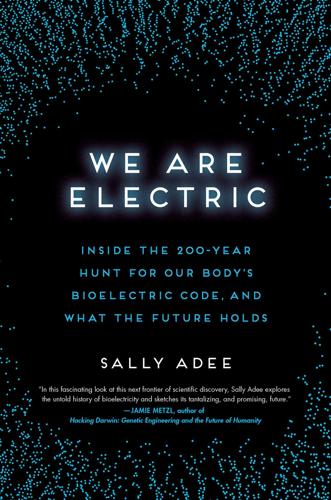
We Are Electric: Inside the 200-Year Hunt for Our Body's Bioelectric Code, and What the Future Holds
by
Sally Adee
Published 27 Feb 2023
CHAPTER 5 Artificial memories and sensory implants: The hunt for the neural code In 2016, a Silicon Valley start-up called Kernel emerged from “stealth mode” to publicly announce that they were building a prosthetic memory—a brain-implantable microchip that would not only help people with traumatic brain injuries regain their ability to recall information but also eventually help the rest of us become more intelligent. The possibilities were limitless, if you believed Kernel’s founder, Bryan Johnson, who had just bet $100 million on the idea. “Could we learn a thousand times faster?” Johnson said at the time.1 “Could we choose which memories to keep and which to get rid of?
…
This showed, Berger insisted, that MIMO was not specific to one particular animal, raising the possibility that one day when you’re reaching for the fries, your good decision implant could give you a little “salad” zap. Berger had long relied on grants from the Defense Advanced Research Projects Agency (DARPA), widely known as the US military’s mad science wing, and his research dovetailed nicely with their efforts to understand the neuroscience of memory and traumatic brain injury (with a view to fixing those sustained from IEDs and other war injuries). The agency was funding a prosthetic memory device for implantation in a human brain,72 but both the timeframe (too short) and the money (not enough) put human trials out of reach. Enter Bryan Johnson, who had recently pocketed $800 million from selling his online-payments company to PayPal, and was looking for something more exciting to invest in.73 When he discovered Berger’s work, Johnson immediately dumped $100 million into the new start-up, Kernel, that would bring the memory chip to reality.

Tribe: On Homecoming and Belonging
by
Sebastian Junger
Published 23 May 2016
Chappelle, Wayne, et al. “Suicide Among Soldiers: A Review of Psychosocial Risk and Protective Factors.” Psychiatry 76, no. 2 (Summer 2013): 97–125. http://www.sciencedirect.com/science/article/pii/S0887618514000656. Congressional Budget Office. The Veterans Health Administration’s Treatment of PTSD and Traumatic Brain Injury Among Recent Combat Veterans. February 9, 2012. http://www.cbo.gov/sites/default/files/02-09-PTSD_0.pdf. Crombach, A., and T. Elbert. “The Benefits of Aggressive Traits: A Study with Current and Former Street Children in Burundi.” Child Abuse and Neglect 38, no. 6 (June 2014): 1041–50. De Dreu, C.
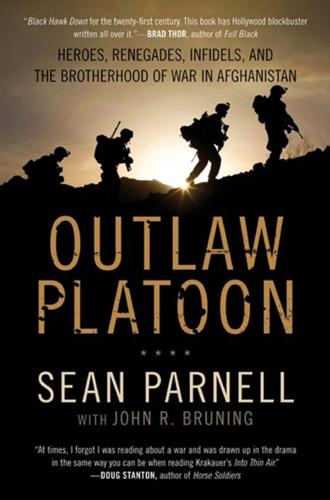
Outlaw Platoon: Heroes, Renegades, Infidels, and the Brotherhood of War in Afghanistan
by
Sean Parnell
and
John Bruning
Published 28 Feb 2012
Chris Brown, Bray, McCleod, Campbell, and Howard—and how many others carried shrapnel souvenirs within their bodies? In the years to come, how many times would their bodies set off airport metal detectors? My men had been cut and torn; six of them had been shot in the head. A handful of us had suffered traumatic brain injuries whose insidious symptoms had plagued us through the rest of the deployment. How many would feel the effects of this time in their lives through those wounds? Almost all of us. The thunder of incoming Chinooks swelled in the distance. The sound of our freedom. The men grew silent, realizing that soon our union would be broken apart.
…
A group of mourners was clustered in the area, and my heart leapt to my throat as we approached them. “I am so fucking sick of this,” Greeson growled. How many funerals had we attended this summer? Too many. Outlaw Platoon had deployed to Afghanistan again, but this time Greeson and I had been left behind. The wounds I had sustained on June 10 had resulted in a traumatic brain injury. I suffered migraine headaches, memory loss, and blurred vision. All of those things grew worse until my cognitive ability began to degrade. I had trouble driving. My motor coordination suffered. I finally got help and was going through intensive neurocognitive rehabilitation. But I knew that I’d never be the same again and my time left in the army was coming to a close.

The Pot Book: A Complete Guide to Cannabis
by
Julie Holland
Published 22 Sep 2010
They are involved in a large number of biochemical reactions and physiological processes, which are discussed in detail in other chapters. I will present one example only. Traumatic brain injury leads to a local and transient accumulation of 2-AG at the site of injury. Neuroprotection exerted by the administration of synthetic 2-AG suggests that the formation of 2-AG may serve as a molecular regulator of this pathological event, attenuating the brain damage (Panikashvili et al. 2001). 2-AG exerts its neuroprotective effect after traumatic brain injury, at least in part, by inhibition of NF-κB activation. NF-κB, a protein, is known to lead to inflammation (Panikashvili et al. 2005). 2-AG also inhibits the expression of proinflammatory cytokines and lowers endothelin (ET-1)–induced vasoconstriction after brain injury (Chen et al. 2000).
…
Research has shown that what makes these molecules neuroprotec-tive is their ability to influence brain and immune function at the molecular level, their powerful intrinsic antioxidant activity, and their actions on various other targets, known and unknown. Why is neuroprotection important? Neuroprotection refers to mechanisms and strategies used to protect against neuronal injury, degeneration, or death in the central nervous system (CNS), especially following acute disorders such as stroke or traumatic brain injury or as a result of chronic neurodegenerative diseases such as amyotrophic lateral sclerosis (ALS), Alzheimer’s disease (AD), and multiple sclerosis (MS) (Hill 2006). Neuroprotection has been proposed as a potential strategy to prevent the onset of neurodegenerative diseases (Carter and Weydt 2002; Carter et al. 2003).
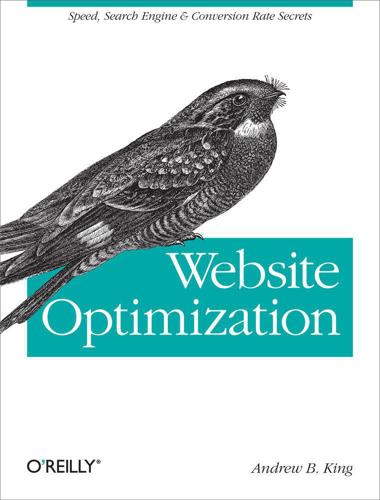
Website Optimization
by
Andrew B. King
Published 15 Mar 2008
For example, a lawyer who listed all of his services on one page: http://www.example.com/services.html would have one page for each of the following services: Automobile accidents Slip and fall Traumatic brain injury Creating a page for each major service—that is, an automobile accidents page, a slip and fall page, and so on—is a more search-friendly approach. Create separate pages that match your most popular queries as well as the services that you want to target: http://www.example.com/services/automobile-accidents.html http://www.example.com/services/slip-fall.html http://www.example.com/services/traumatic-brain-injury.html Create search-friendly URIs One characteristic of a well-optimized site is the presence of search-friendly URIs.

My Custom Van: And 50 Other Mind-Blowing Essays That Will Blow Your Mind All Over Your Face
by
Michael Ian Black
Published 14 Jul 2008
If you find yourself swerving all over the place, chances are you’ve had too much. If that’s the case, stop, drop, and scoop. Get some of that invigorating cold snow into your system as soon as possible; too much alcohol can instantly transform a pleasant day on the slopes into a blunt-force traumatic brain injury. Skiing high is fine. The ski patrol is not there for your amusement! Yes, they have zippy snowmobiles and sleds, but that doesn’t mean they want to spend their day speeding up and down the mountain responding to fake emergencies just because you find it amusing to lie on the snow screaming, “I think I broke my neck!!!”

Artificial You: AI and the Future of Your Mind
by
Susan Schneider
Published 1 Oct 2019
If, during this process, a prosthetic part of the brain ceases to function normally—specifically, if it ceases to give rise to the aspect of consciousness that that brain area is responsible for—then there should be outward indications, including verbal reports. An otherwise normal person should be able to detect (or at least indicate to others through odd behaviors) that something is amiss, as with traumatic brain injuries involving the loss of consciousness in some domain. If this did happen, it would indicate a substitution failure of the artificial part for the original component, and the scientists conducting the experiment could conclude: Microchips of that sort just don’t seem to be the right stuff.
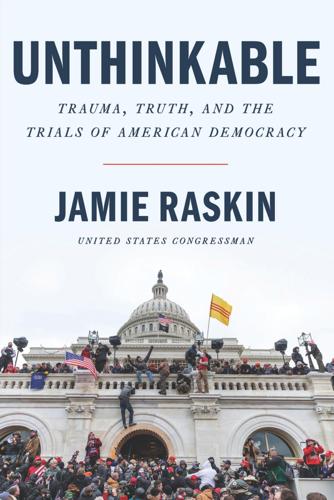
Unthinkable: Trauma, Truth, and the Trials of American Democracy
by
Jamie Raskin
Published 4 Jan 2022
Capitol Police force, kicking off four hours of savage, medieval-style violence that will result in eight physical breaches of the Capitol. The insurrectionists and rioters will leave at least five people dead (with several more to come by suicide of officers) and more than 140 officers wounded and injured, many of them hospitalized with traumatic brain injuries, concussions, broken arms, broken legs, broken ribs, broken vertebrae, black eyes, broken noses, lost fingers, broken necks, broken jaws, post-traumatic stress syndrome, and every manner of emotional and psychological damage. Of this unfolding rampage, we members of Congress assembling inside the Capitol still know nothing.
…
When Officer Michael Fanone testified on Tuesday, July 27, 2021, before the newly formed House Select Committee to Investigate the January 6th Attack on the United States Capitol, he spoke of the brutal injuries he suffered at the hands of the insurrectionists, which gave him a heart attack, traumatic brain injury, countless other wounds, and posttraumatic stress disorder. But it was no time at all before right-wingers online wondered whether Fanone had simply been mistaken by protesters for an “Antifa” fighter, even though, as he pointed out at the hearing, he was in his police uniform that day. Of course, the premise of this Bizarro World insinuation is that the “fake” MAGA and extremist protesters, who were actually Antifa fighters, according to right-wing dogma, had attacked a police officer . . . because they thought he was Antifa—which of course makes no sense.
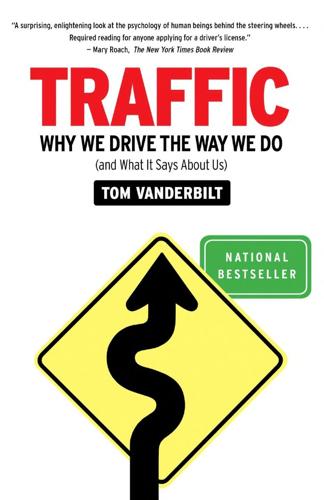
Traffic: Why We Drive the Way We Do (And What It Says About Us)
by
Tom Vanderbilt
Published 28 Jul 2008
one-fifth of the traffic: Michele Faberi, Marco Martuzzi, and Franco Pirrami, Assessing the Health Impact and Social Costs of Mopeds: Feasibility Study in Rome (Rome: World Health Organization, 2004), p. xvii. fewer riders wear helmets: The helmet-use rates come from F. Servadei, C. Begliomini, E. Gardini, M. Giustini, F. Taggi, and J. Kraus, “Effect of Italy’s Motorcycle Helmet Law on Traumatic Brain Injuries,” Injury Prevention, vol. 9, no. 3 (2003), pp. 257–60. collisions with cars: Giuseppe Latorre, Giuliano Bertazzoni, Donato Zotta, Edward Van Beeck, and Gualtiero Ricciardi, “Epidemiology of Accidents Among Users of Two-Wheeled Motor Vehicles: A Surveillance Study in Two Italian Cities,” European Journal of Public Health, vol. 12, no. 2 (2002), pp. 99–103.
…
For corruption levels, see Alfredo del Monte and Erasmo Papagni, “The Determinants of Corruption in Italy: Regional Panel Data Analysis,” European Journal of Political Economy, vol. 23 (June 2007), pp. 379–96. For helmet-use rates, see F. Servadei, C. Begliomini, E. Gardini, M. Giustini, F. Taggi, and J. Kraus, “Effect of Italy’s Motorcycle Helmet Law on Traumatic Brain Injuries,” Injury Prevention, vol. 9, no. 3 (2003), pp. 257–60. casualties there will be: See D. Parker, J. T. Reason, A. S. R. Manstead, and S. G. Stradling, “Driving Errors, Driving Violations and Accident Involvement,” Ergonomics, vol. 38 (1995), pp. 1036–48. more women in government: Anand Swamy, Stephen Knack, Young Lee, and Omar Azfar, “Gender and Corruption,” Center for Development Economics, Department of Economics, Williams College, 2000.

The Age of Illusions: How America Squandered Its Cold War Victory
by
Andrew J. Bacevich
Published 7 Jan 2020
“Even more than previous wars,” they wrote, “Iraq and Afghanistan have been working class wars,” with the poorer parts of America “bearing a greater share of the human costs of war.”28 It’s not residents of Palo Alto, California, or Manhattan’s Upper East Side who suffer the greatest incidence of combat-related post-traumatic stress or traumatic brain injury or multiple amputations. Kriner and Shen substantiate what nonacademic observers have long suspected. In no sense do the armed forces of the United States represent a cross section of American society. In March 2003, with the Iraq War barely under way, for example, the New York Times matter-of-factly likened the composition of the armed forces to the “makeup of a two-year commuter or trade school outside Birmingham or Biloxi.”29 Had the Times characterized the school’s student body as largely male, it would have aptly characterized the cohort that has done most of the fighting in recent American wars.
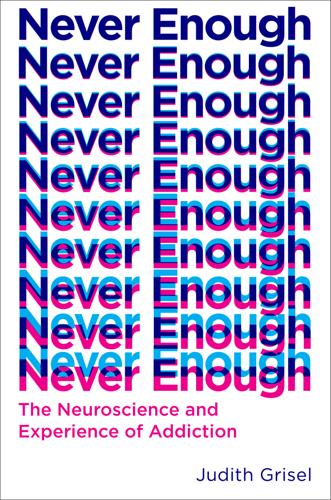
Never Enough: The Neuroscience and Experience of Addiction
by
Judith Grisel
Published 15 Feb 2019
The U.S. manufacturer of sodium thiopental stopped making the drug after its production moved to Italy and the government there threatened to ban its export unless the company could ensure it was not being used for this purpose. The shortage has somewhat slowed the pace of executions. Barbiturates are still used for surgical anesthesia, as well as in the treatment of epilepsy, and to help reduce intracranial pressure following traumatic brain injury. However, in the 1960s another class of sedative-hypnotics, also GABAA agonists, was introduced—benzodiazepines—and these were purported to be much safer and less addictive than their predecessors. Not surprisingly, those claims were overstated. Millions of people are now hooked on benzos, but on the bright side it’s not possible to overdose from them alone, so the market is likely to stay strong.
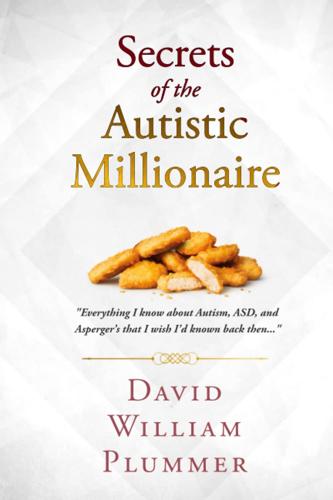
Secrets of the Autistic Millionaire: Everything I Know Now About Autism and Asperger's That I Wish I'd Known Then
by
David William Plummer
Published 14 Sep 2021
Hours from any form of emergency medical care, his parents did what they could, which is to say, very little: they tended to his road rash and other injuries until he finally awoke some 45 minutes later. Dad’s only memory from the incident was of a man in white watching over him as he slept. Throughout his life my father had cerebral palsy (CP) affecting primarily the right side of his body. Conventional family wisdom attributes this to the traumatic brain injury suffered when he fell out of that car, but most medical experts I’ve spoken to point to the oxygen deprivation most likely to have accompanied the circumstances of his birth. Apparently, the symptoms of this type of brain injury can take some time to manifest. In the end, it’s immaterial whether it started at birth or at a few years of age, but the fact that Dad grew up as a teenager in the 1950s labelled by some as a “cripple” was formative upon his personality, both for better and for worse.
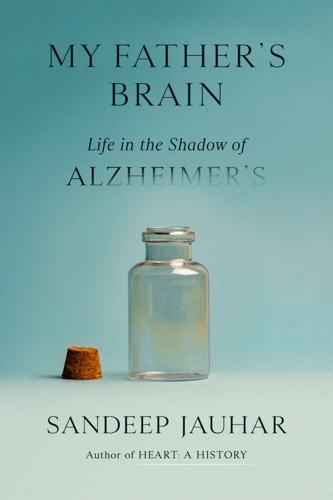
My Father's Brain: Life in the Shadow of Alzheimer's
by
Sandeep Jauhar
Published 11 Apr 2023
“Neurology involves a consciousness but also a metaconsciousness that we don’t necessarily see in other diseases.” The term “anosognosia” was coined about a century ago to describe stroke patients who seemed unaware of their paralysis. Though the phenomenon remains poorly understood, it is observed today in a host of neurological and psychiatric conditions—including traumatic brain injury, obsessive-compulsive disorder, and schizophrenia—in which awareness of the disease and its consequences is compromised by the disease itself. Anosognosia can vary in severity, from mild to profound, and in the exact mental domain affected. A person might be aware of decline in one area of functioning, such as memory, but not in another, such as empathy or sociability.

Deep Nutrition: Why Your Genes Need Traditional Food
by
Catherine Shanahan M. D.
Published 2 Jan 2017
As I had hoped, Deep Nutrition changed the conversation. But it didn’t do enough. Sadly, the general trajectory of America’s health has not changed—not even close. Statistics show our country is less healthy than it was in 2008. There are now more people struggling with obesity, more children with autism, more food allergies, more traumatic brain injuries from which athletes and soldiers don’t fully recover. There’s much more work to be done. And thankfully, there is also now new, powerful scientific data at our disposal to bring the concepts of Deep Nutrition up-to-date, and plenty of additional research that reaffirms the basic tenets of the book as well as research demanding an expansion of some of those concepts into new territories.
…
Since that change, concussed football players are now examined carefully before they’re allowed to re-enter the game, as a secondary head trauma of an already concussed player can have multiplier effect on the player’s already wounded brain, diminishing his chances of a positive recovery outcome. My hope is that as more team doctors and other medical professionals understand the important role oxidative stress plays in traumatic brain injury (TBI) recovery, more steps will be taken to coddle the post-concussive brain with a combination of stress reduction, plenty of restorative sleep, and dietary intervention to give the player every possible chance of complete recovery. Where Not to Fight Fire with Fire: The Forest of PUFA-Rich Membranes It’s important that you fully understand how the healthy brain formula can help you to make the best real-world choices.

Thinking Machines: The Inside Story of Artificial Intelligence and Our Race to Build the Future
by
Luke Dormehl
Published 10 Aug 2016
Carrying the somewhat-redundant backronym BRAIN, the first of these initiatives was announced by President Barack Obama at his State of the Union address in early 2013. Its goal is to map the brain at the level of its electrical pathways and, in doing so, to shed light on various neurological disorders, such as Alzheimer’s, Parkinson’s disease, schizophrenia, depression and traumatic brain injuries. The $1 billion Human Brain Project, meanwhile, has the stated aim of building a complete computer simulation of the human brain over a ten-year period in Geneva, Switzerland. (Perhaps it will be the brain of a banker?) To achieve this, its directors plan to reverse-engineer the brains of various animals in order of complexity, starting with a mouse and working their way up.
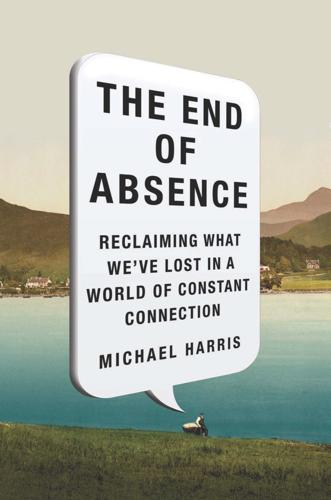
The End of Absence: Reclaiming What We've Lost in a World of Constant Connection
by
Michael Harris
Published 6 Aug 2014
Even alphabetical order (a to z) is of course an invention and a direct result of the printing revolution. (See Eisenstein’s The Printing Press as an Agent of Change, 71.) 17. Tim Berners-Lee indulges in this recall-as-memory fallacy in a coauthored 2012 paper titled “Defend the Web,” where he tells the story of Deacon Patrick Jones, who found succor in “memory aids” after a traumatic brain injury. “His very memory is extended into the Internet,” the authors enthuse; but this is clearly not so. 18. Associations will come into play that shape and strengthen this memory. For example, the “ingle” part of “Inglenook” might be associated in your brain with “ingots,” a building material that might be used to build such a cozy corner; “angle,” which sounds like “ingle,” might be called up, too.
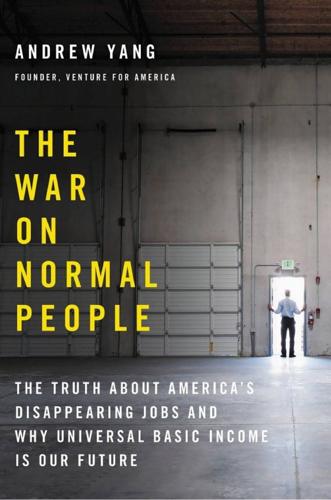
The War on Normal People: The Truth About America's Disappearing Jobs and Why Universal Basic Income Is Our Future
by
Andrew Yang
Published 2 Apr 2018
In 2011, he moved to western Massachusetts and received health insurance for the first time—it was free under “Romneycare” because he was considered low income. A couple years ago, after not being able to work for a few months due to health problems, Tony was told by his therapist, “You should try to get disability.” Tony at first thought that he wouldn’t qualify because his injuries were mostly brain-related: multiple traumatic brain injuries from childhood accidents (a fall on concrete when he was nine and a crashed scooter when he was 11) and concussions from playing high school football led to impaired cognition and mood swings. He also suffered from chronic fatigue, muscle pain, depression, and chronic Lyme disease. Tony took the therapist’s advice and went on the Social Security Disability Insurance (SSDI) website to apply.
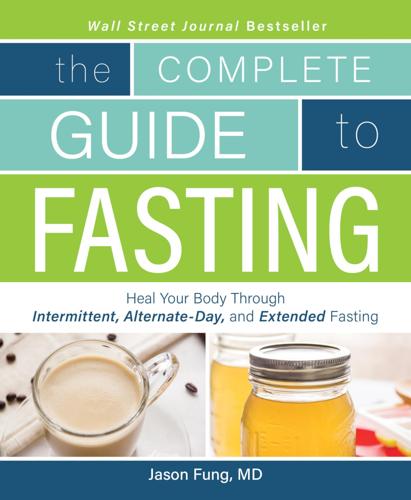
Complete Guide to Fasting: Heal Your Body Through Intermittent, Alternate-Day, and Extended Fasting
by
Jimmy Moore
and
Jason Fung
Published 18 Oct 2016
AMY BERGER Amy Berger, MS, CNS, NTP, is the author of the book The Alzheimer’s Antidote. She has a master’s degree in human nutrition and is a Certified Nutrition Specialist and Nutritional Therapy Practitioner. As a US Air Force veteran, she has a special interest in the use of low-carbohydrate and ketogenic diets for neurological health (including traumatic brain injury), as well as improving metabolic conditions such as type 2 diabetes and obesity. After spending years doing what health and nutrition experts claimed were “all the right things” to lose weight and maintain optimal health and failing to experience the expected results, Amy discovered that the conventional advice about low-calorie, low-fat dieting and exercise did not lead to the promised outcomes.

Nomadland: Surviving America in the Twenty-First Century
by
Jessica Bruder
Published 18 Sep 2017
She dropped out of high school but eventually got her GED, along with a certificate in construction technology and an associate’s degree. She held jobs that included trucker, cocktail waitress, general contractor, flooring-store owner, insurance executive, building inspector, IRS phone representative, caregiver at a traumatic brain injury facility, dog-feeder and kennel-cleaner in a government program for seniors—she still bears the scar from a Shih Tzu bite—and de-featherer of ducks and quail at a hunting lodge. And Linda raised two daughters, mostly on her own. I listened intently, absorbing as much as I could. I hoped it would help me understand some nagging questions: How does a hardworking sixty-four-year-old woman end up without a house or a permanent place to stay, relying on unpredictable low-wage work to survive?
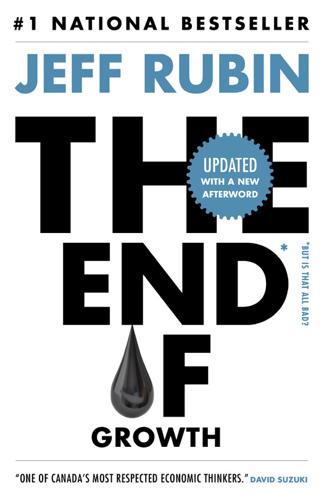
The End of Growth
by
Jeff Rubin
Published 2 Sep 2013
Designed to offer protection from injury, today’s shoulder pads, elbow pads and football helmets have actually turned players into weapons. As with the introduction of boxing gloves at the turn of the century, the evolution of professional sports has come with unforeseen consequences. Bigger, armor-padded combatants playing at faster speeds have made traumatic brain injuries systemic to sport. A season in a professional league is now a war of attrition; the question isn’t if players will get hurt, but when. So-called purists argue that big hits are part of the game. I’ve split a pair of season tickets to the Toronto Maple Leafs for years and enjoy a good hit as much as anyone, but when hardly a week passes without a professional athlete suffering a major head injury, it becomes clear that something is wrong.
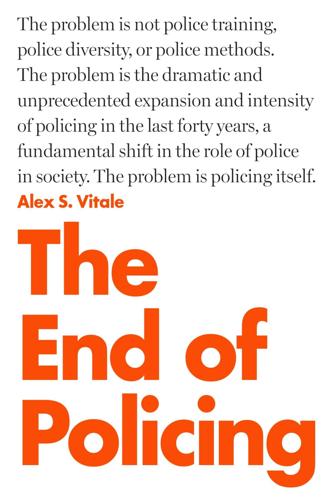
The End of Policing
by
Alex S. Vitale
Published 9 Oct 2017
In October 2015 a student recorded a South Carolina sheriff’s deputy assigned to the school violently arresting a teenage girl for having a phone in class. The officer flipped the young woman and her desk over, then dragged, threw, and tackled her.35 A fellow student who videotaped the incident was physically threatened and arrested when she vocally protested what was happening. In 2010 a fifteen-year-old student with a past traumatic brain injury was beaten by a Dalton, Illinois police officer at a special-needs school for having his shirt untucked. The incident was captured on surveillance video and no action was taken against the officer, who didn’t even report the incident. 36 Such complaints are pervasive in schools across the country.

Quackery: A Brief History of the Worst Ways to Cure Everything
by
Lydia Kang
and
Nate Pedersen
Published 16 Oct 2017
Some estimated that 50 percent of those trepanned died (unlike the ancient skulls found before—which boasted closer to a 20 percent mortality rate). It was such a barbaric situation that in 1839, surgeon Sir Astley Cooper argued, “If you were to trephine, you ought to be trephined in turn.” Though trepanning is still used for treatment of traumatic brain injury, an occasional few have veered from this obvious lifesaving strategy and instead bored themselves for a buzz. In 1965, a Dutchman named Bart Huges thought it could bring him to a higher state of consciousness. Using an electric drill, knife, and hypodermic needle, he went to work. Afterward, he stated, “I feel as I felt before the age of fourteen.”
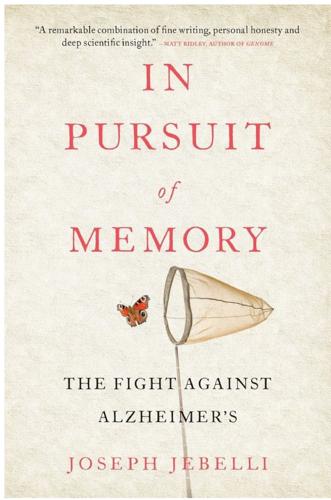
In Pursuit of Memory: The Fight Against Alzheimer's
by
Joseph Jebelli
Published 30 Oct 2017
To see just how indicative of brain damage fluid signals are, he recruited the help of ice hockey players from the Swedish Hockey League.2 This national obsession constitutes 288 professional athletes spread over twelve teams, and each player is only too aware of the risk of concussion and/or traumatic brain injury. ‘It’s really troubling them, because the sport is not about knocking someone out; it’s about scoring, and these players have seen their teammates severely concussed.’ During the 2012–13 season, thirty-five players suffered concussions; some were so bad they knocked the player unconscious.

Know Thyself
by
Stephen M Fleming
Published 27 Apr 2021
Langer, and Jérôme Sackur. “Meditation Focused on Self-Observation of the Body Impairs Metacognitive Efficiency.” Consciousness and Cognition 70 (2019): 116–125. Schmitz, Taylor W., Howard A. Rowley, Tisha N. Kawahara, and Sterling C. Johnson. “Neural Correlates of Self-Evaluative Accuracy After Traumatic Brain Injury.” Neuropsychologia 44, no. 5 (2006): 762–773. Schneider, Peter, Michael Scherg, H. Günter Dosch, Hans J. Specht, Alexander Gutschalk, and André Rupp. “Morphology of Heschl’s Gyrus Reflects Enhanced Activation in the Auditory Cortex of Musicians.” Nature Neuroscience 5, no. 7 (2002): 688–694.
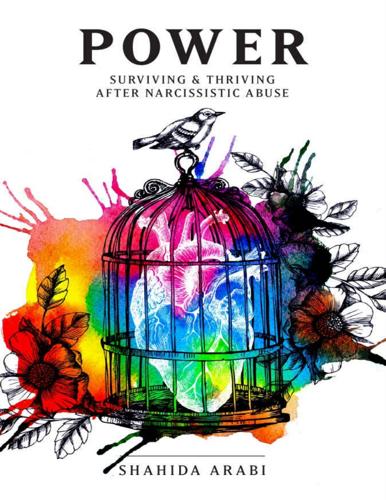
Power
by
Shahida Arabi
Published 11 Jan 2017
In the worst scenarios, some of them commit suicide. After years of domestic violence, Jessica Haban took her own life on December 26, 2015, at the mere age of 28. In an unprecedented move, her husband, Long Vang, was charged for driving her to suicide: he had been relentlessly bullying and contacting her during recovery from a traumatic brain injury even after a restraining order had been placed on him. He had coerced her into leaving treatment, three days before she committed suicide. Stalking and harassing behavior is common after the ending of a relationship with a narcissist, especially if the victim happened to “discard” the narcissist first.
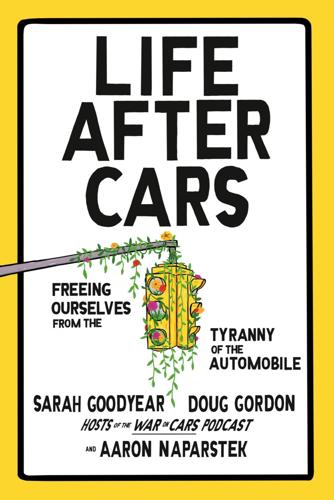
Life After Cars: Freeing Ourselves From the Tyranny of the Automobile
by
Sarah Goodyear
,
Doug Gordon
and
Aaron Naparstek
Published 21 Oct 2025
And fourteen. Another 5.2 million people, or about 1.6 percent of the US population, were injured in an automobile crash seriously enough to seek medical attention. A significant percentage of those injuries were “life-altering”—a phrase that includes paralyzing spinal cord injuries, traumatic brain injuries, and loss of limbs. These deaths and injuries are only more heartbreaking because so many of them—almost all of them—are preventable. In the twenty-first century, wealthy nations outside of North America have concentrated on reducing death and injury through a combination of design, enforcement, and incentivizing non-car travel, and it has worked.
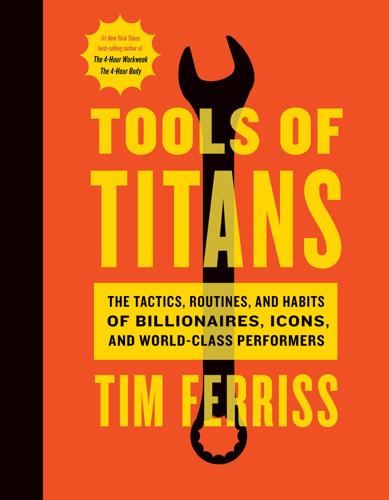
Tools of Titans: The Tactics, Routines, and Habits of Billionaires, Icons, and World-Class Performers
by
Timothy Ferriss
Published 6 Dec 2016
Costs vary, but are roughly $625 for setup and then $125 per year for storage and maintenance. Mesenchymal stem cells can later be harvested from the dental pulp of teeth for useful (e.g., bone, cartilage, muscle, blood vessels, etc.), life-changing (e.g., motor neurons for repairing damaged spinal cord), or potentially life-saving (e.g., traumatic brain injury) treatments using your own biological raw materials. Heat Is the New Black “Hyperthermic conditioning” (calculated heat exposure) can help you to increase growth hormone (GH) levels and substantially improve endurance. I now take ~20-minute sauna sessions post-workout or post-stretching at least four times per week, typically at roughly 160 to 170°F.
…
Crossroads specializes in helping patients conquer powerful addictions (such as heroin or cocaine) using the African hallucinogen ibogaine and 5-MeO-DMT, also referred to as “the God molecule.” Dan Engle, MD (TW: @drdanengle, drdanengle.com), is board-certified in psychiatry and neurology. He combines functional medicine with integrative psychiatry to enhance regenerative health and peak performance. His prior experience includes traumatic brain injury research and working in the Peruvian jungle with plant medicines such as ayahuasca. In this profile, we discuss several psychedelics, including one legal option: flotation therapy. Ibogaine and 5-MeO-DMT are detailed at some length, as they’re both used at Martin’s clinic. Ibogaine is the only compound I’ve seen that can eliminate 90%+ of the physical withdrawal symptoms of heroin addiction in one fell swoop.
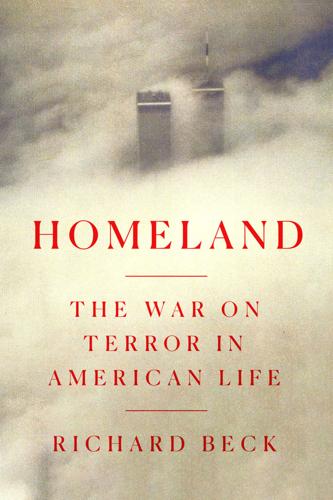
Homeland: The War on Terror in American Life
by
Richard Beck
Published 2 Sep 2024
He pointed to the fact that the tour group’s gratitude and friendly curiosity and little presents, all of which did more to help them feel good about themselves than it did to help the patients at Walter Reed, depended on his being vulnerable—to injury and death, of course, but also to mental illness, drug addiction, and permanent physical disability. In just the first four years of the Iraq War, the military spent more than $23 million on prescription drugs for traumatic brain injury and post-traumatic stress disorder (PTSD), two of the most common diagnoses given to those who fought in Iraq and Afghanistan. It’s now estimated that about a fifth of returning soldiers experience PTSD, and by 2010 suicide rates in the military had surpassed those in the rest of the United States.[91] Superhero movies and splashy newspaper pieces about advances in military technology made it seem as though America’s soldiers were invulnerable, and in a relative sense they basically were: From 2004 to 2009, more than twenty-seven Iraqis died for every American killed in the war.[92] But America did not fight the war on terror in a relative sense.
…
Like the war itself, Peters’s list of places where the United States might have to send its military spans every continent except for Antarctica, and each location is home to at least one of the mega-slums that we have identified as a signature product of stagnating growth within global capitalism. His description of urban conflict, with America’s troops shooting their way through tower block stairwells and blind alleyways, reads like the script for a Call of Duty: Modern Warfare game. His emphasis on the dangers of concussions anticipates the rise of traumatic brain injury as the signature combat wound of the Iraq War. And his chilling warnings about the difficulties of distinguishing enemy combatants from civilians in urban combat environments—“atrocity is up-close and commonplace”—have been more than borne out by the results of the past twenty years. There is one other curious aspect of Peters’s essay that I would like to discuss.
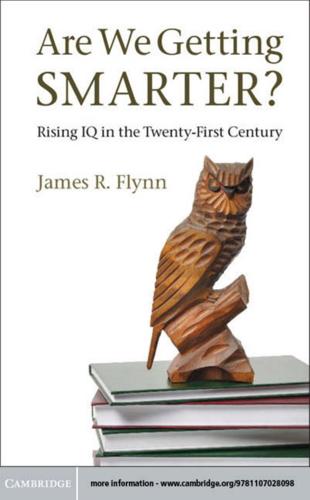
Are We Getting Smarter?: Rising IQ in the Twenty-First Century
by
James R. Flynn
Published 5 Sep 2012
It may seem impossible that from 1978 to 2006, American adults would gain 8.00 points for active vocabulary and 2.25 points for passive. The latter is only 28 percent of the former. However, recall and recognition involve different brain structures and processes. It is not uncommon for individuals with traumatic brain injury to be able to recognize a correct answer that they cannot recall. During half a century, the world of work may have altered its verbal demands toward the capacity to actually use more words (more talkers and fewer listeners). If so, the appropriate brain structures would become more developed, just as if we all began to swim a lot our muscles would adapt.
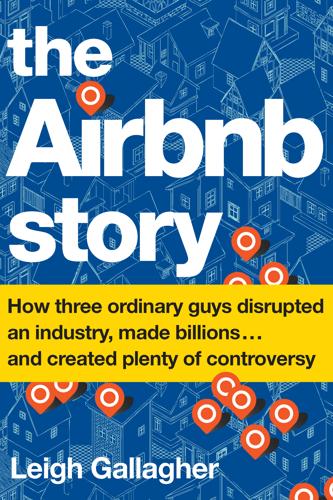
The Airbnb Story: How Three Ordinary Guys Disrupted an Industry, Made Billions...and Created Plenty of Controversy
by
Leigh Gallagher
Published 14 Feb 2017
In November 2015, Zak Stone, a writer in Los Angeles, posted a heart-wrenching essay in the online magazine Medium about the tragic death of his father at an Airbnb rental in Austin, Texas, where the family had traveled for a vacation together. When his father sat on a rope swing in the home’s backyard, the tree limb broke in half and fell on his head, leading to traumatic brain injury that killed him, a horrific and tragic scene that Stone described in graphic detail. In the piece, Stone also revealed another Airbnb-related death: in 2013, a Canadian woman staying in a listing in Taiwan was found dead after a faulty water heater had filled the apartment with carbon monoxide.

Experience on Demand: What Virtual Reality Is, How It Works, and What It Can Do
by
Jeremy Bailenson
Published 30 Jan 2018
Mistakes are free in VR, and when the risks of on-the-job learning were high, technology that prepared a pilot, or a surgeon, or a soldier for the life-and-death responsibilities of his profession without risk was a huge win. The use of VR for training would continue to grow. In the late ’80s and ’90s, early VR pioneers like Skip Rizzo at the University of Southern California began work with VR to help with physical rehabilitation for people who had suffered from strokes and traumatic brain injuries, and to train people to use prosthetics. These and other systems were designed to motivate users and ease the tedium of repetitious rehab exercises through interactive experiences. Some even provided feedback based on patients’ movements, which reduced the potential for error when performing exercises.
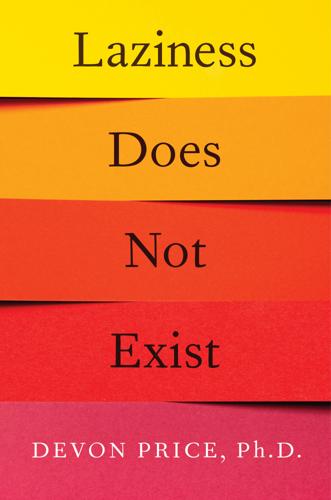
Laziness Does Not Exist
by
Devon Price
Published 5 Jan 2021
One reason is that most human suffering is invisible to an outside observer. Unless a student tells me that they’re dealing with an anxiety disorder, poverty, or caring for a sick child, I’ll never know. If I don’t have a conversation with the homeless person near my bus stop, I’ll never hear about his traumatic brain injury, and how that affects basic daily tasks like getting dressed in the morning. If I have an underperforming coworker, I have no way of knowing that their low motivation is caused by chronic depression. They might just look apathetic to me, when really they’re running on fumes. When you’ve been alienated by society over and over again, you tend to look totally checked out, even if you’re really busting your ass.

Britain Etc
by
Mark Easton
Published 1 Mar 2012
As the stories of the condemned men unfolded, remarkable similarities emerged. All sixteen had experienced family violence; fourteen of the men had been severely physically abused as children by a family member. Three of them had been beaten unconscious. Twelve of the death row inmates had been diagnosed with traumatic brain injury. Psychiatrist James Gilligan, while director of the Bridgewater State Hospital for the criminally insane in Massachusetts, also explored the life histories of incarcerated killers. Violent men, he concluded, have often been the victims of extreme physical and psychological violence during childhood.
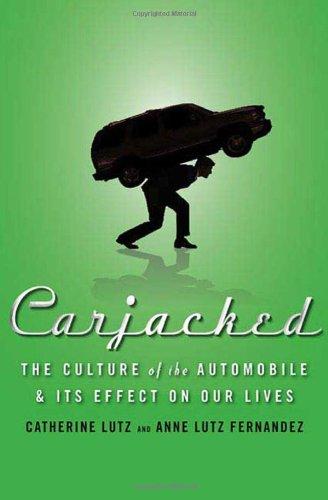
Carjacked: The Culture of the Automobile and Its Effect on Our Lives
by
Catherine Lutz
and
Anne Lutz Fernandez
Published 5 Jan 2010
Injury figures are for 2000 in the United States: Leonard Evans, Traffic Safety (Bloomfield, MI: Science Serving Society, 2004). An estimated 599,000 brain injuries occur each year involving motor vehicles, though only some of these will have permanent disabling effects; Joel Forkosch et al., “The Incidence of Traumatic Brain Injury in the United States,” Disability Statistics Abstract, 1996, 14: 1–4. P. C. Dischinger et al., “CIREN Report: Consequences and Costs of Lower-Extremity Injuries,” DOT HS 809 871. Washington, DC: Department of Transportation, June 2005. Edward B. Blanchard, Edward J. Hickling, Ann E. Taylor, Warren R.
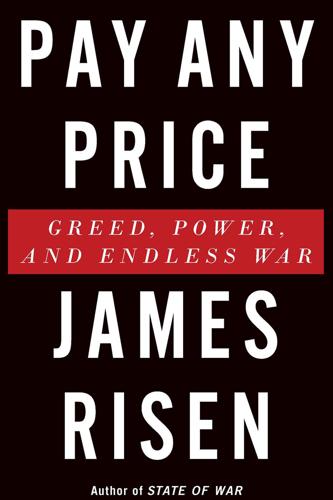
Pay Any Price: Greed, Power, and Endless War
by
James Risen
Published 15 Feb 2014
“My patients shouldn’t have lots of metal in their lungs,” said Szema. “They didn’t have it when they left for Iraq, but they have it now.” Medical experts began to describe a new disease unique to veterans from Iraq and Afghanistan—“war lung injury.” Among veterans, war lung injury soon began to take its place alongside post-traumatic stress disorder and traumatic brain injury as one of the signature medical problems of the global war on terror. Independent veterans’ groups fielded worried calls from returning soldiers, and, beginning in 2008 and 2009, hundreds of veterans around the United States filed lawsuits against KBR seeking damages for their exposure to the burn pits in Iraq.
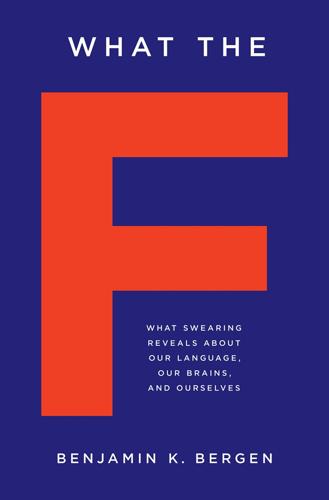
What the F: What Swearing Reveals About Our Language, Our Brains, and Ourselves
by
Benjamin K. Bergen
Published 12 Sep 2016
In his own experience and that of the priest, Lordat had discovered aphasia—language impairment caused by damage to specific parts of the brain. Unfortunately, aphasia is common. Currently, about 1 million Americans suffer from some type of aphasia due to brain damage at the hands of stroke, as well as traumatic brain injuries, infections, and dementia.5 And with two centuries of accumulated observations, we now know that many of these people exhibit the very same syndrome that Lordat observed in his priest. They find it difficult or impossible to intentionally articulate and string together words. But some spontaneous language is still preserved—interjections like yeah and huh, filler words like um and well, and some of the most vulgar verbal ejaculations in the language.

Also Human: The Inner Lives of Doctors
by
Caroline Elton
Published 1 Mar 2018
The questions are not testing clinical knowledge (that’s assessed by medical school finals) but instead assess whether the applicant possesses the professional attributes needed to manage the everyday situations they may encounter in their first year of practice. For example, applicants might be given the following brief scenario: Mr Farmer has been a patient on the ward for six months; he breathes with the aid of a ventilator following a traumatic brain injury. As you make your rounds, you notice Mr Farmer appears to be experiencing breathing problems. Both the consultant and the registrar (more senior trainee) from your team are dealing with a patient on the neighbouring ward. This is your first week and you have not yet attended a potentially critically unwell patient by yourself.
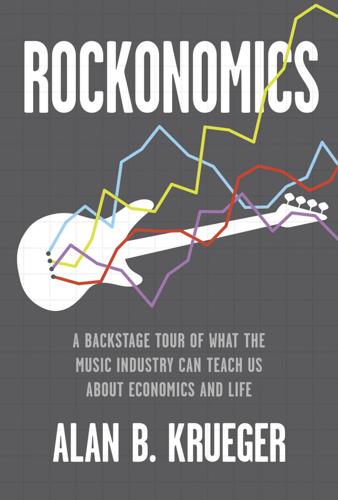
Rockonomics: A Backstage Tour of What the Music Industry Can Teach Us About Economics and Life
by
Alan B. Krueger
Published 3 Jun 2019
Although the underlying mechanisms by which music helps memory are still uncertain, accumulating evidence from case studies, clinical work, and a handful of experiments suggests that familiar music is salient and memorable for Alzheimer’s patients in ways that many other stimuli are not.12 A survey of the research literature by music therapy professors Blythe LaGasse and Michael Thaut concludes, “The vast amount of evidence from rehabilitation science has demonstrated that rhythmic stimuli can help to recover function in persons who have decreased functioning due to stroke, traumatic brain injury, spinal cord injury, Parkinson’s disease, and multiple sclerosis.”13 Neuroimaging studies find that the medial prefrontal cortex, a region of the brain that supports retrieval of autobiographical information, is particularly active while people listen to music that was popular during their adolescent years.

Hormone Repair Manual
by
Lara Briden
Published 14 Apr 2021
The solution to low brain glucose is to improve the brain’s ability to use ketones as an alternative energy source, thus improving brain energy, increasing nerve cell growth factors and reducing brain inflammation. Ketones are so beneficial for brain health that a ketogenic diet has been traditionally prescribed for epilepsy, migraines and traumatic brain injury. It may also help dementia with one small study finding that both dietary ketosis and MCT oil supplements can help to stabilise functional brain networks. A keto diet or keto supplement is more likely to be helpful if you have moderate or severe insulin resistance. In fact, the link between insulin resistance and Alzheimer’s is so strong that some researchers refer to Alzheimer’s as ‘type 3 diabetes’.

Unmasking Autism: Discovering the New Faces of Neurodiversity
by
Devon Price
Published 4 Apr 2022
“[P]eople with disabilities that maybe aren’t typical Autism, but have Autistic characteristics in their genetic sequence.” When Autism intersects with other disorders or disabilities, traits can take on new forms or be hidden entirely. I’m close friends with the family of Angel, an Autistic teenager with traumatic brain injuries and intellectual disabilities. If Angel hadn’t been diagnosed with Autism prior to the car accident that caused his brain injury, doctors might never have recognized him as Autistic at all. They might have believed, for example, that he couldn’t speak because of neural damage caused by the car accident.
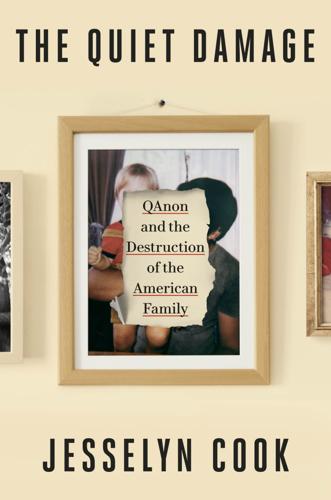
The Quiet Damage: QAnon and the Destruction of the American Family
by
Jesselyn Cook
Published 22 Jul 2024
His faith was the lens through which he understood the world; he’d been taught not to question it. Moments of good fortune in his life were nothing less than divine blessings, he believed. There was no other conceivable explanation for Andrea’s recovery. They made it down the aisle as planned just six months after her traumatic brain injury, as if it had never happened at all. That was a true miracle—proof of God above if ever there were any. Not that Matt needed it. When God tested him, through hardships and disappointments, he never wavered, not even when his father slowly succumbed to prostate cancer before his eyes. Matt’s faith gave him answers where there were none to be found and hope when all was lost.
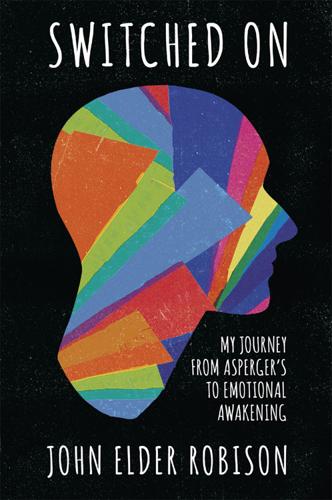
Switched On: My Journey From Asperger's to Emotional Awakening
by
John Elder Robison
Published 6 Apr 2016
It echoes through my head every morning when I walk through the doors of the Berenson-Allen Center for Noninvasive Brain Stimulation at Beth Israel Deaconess Medical Center, which I run and where much of the action in this book takes place. The concept of “brain plasticity” refers to the ongoing capacity of the brain and the nervous system to change itself. Everything that we do, think, feel, and experience changes our brain. A stroke or a traumatic brain injury can affect brain plasticity, and plasticity may also be associated with such developmental disorders as autism. Increased brain plasticity may also potentially endow a person with unanticipated new abilities, as John appears to have experienced in this book. TMS, or transcranial magnetic stimulation, the intervention that John undergoes, provides a unique opportunity for us to learn about the mechanisms of plasticity, and to identify alterations in the brain’s networks that may be responsible for a patient’s problematic symptoms, and also for recovery.

The Space Barons: Elon Musk, Jeff Bezos, and the Quest to Colonize the Cosmos
by
Christian Davenport
Published 20 Mar 2018
Christian Davenport has been a staff writer at The Washington Post since 2000 and currently covers the space and defense industries for the financial desk. He has also worked at Newsday, the Philadelphia Inquirer, and the Austin American-Statesman. He is a recipient of the Peabody award for his work on veterans with traumatic brain injury and has been on reporting teams that were finalists for the Pulitzer Prize three times. He is the author of As You Were: To War and Back with the Black Hawk Battalion of the Virginia National Guard. He lives in Washington, DC, with his wife and three children. NOTES 1. “A SILLY WAY TO DIE” “We need to get out of here”: This account of the crash is based on interviews with Jeff Bezos, Ty Holland, and Brewster County sheriff Ronny Dodson; news reports, such as Gail Diane Yovanovich, “Chopper Crashes with Amazon.com Exec on Board,” Alpine Avalanche, March 13, 2003; and federal investigative reports, including from the Federal Aviation Administration and the National Transportation Safety Board.

Blood and Oil: Mohammed Bin Salman's Ruthless Quest for Global Power
by
Bradley Hope
and
Justin Scheck
Published 14 Sep 2020
She died instantaneously. Another family dropped a toddler from their balcony to a man waiting in the courtyard below with outstretched arms. A Pakistani husband and wife jumped from their window, each embracing a child, hoping their own bodies would absorb the impact of the fall. The man suffered a traumatic brain injury and broke both legs, but the children were spared. Residents gathered in the courtyard for a head count and realized that Ahmed Razi, a Pakistani geologist, and his family were still missing. A friend called upstairs, and Razi’s wife, Nighat, said her apartment was filling with smoke and her husband was unconscious.
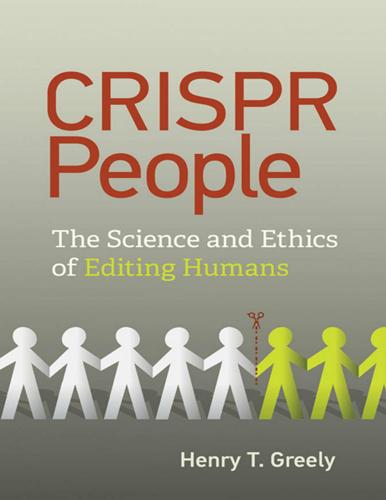
CRISPR People: The Science and Ethics of Editing Humans
by
Henry T. Greely
Published 22 Jan 2021
Miou Zhou, Stuart Greenhill, Shan Huang, et al., “CCR5 Is a Suppressor for Cortical Plasticity and Hippocampal Learning and Memory,” ELife 5 (December 2016): 1–30, https://doi.org/10.7554/eLife.20985. 46. Mary T. Joy, Einor Ben Assayag, Dalia Shabashov-Stone, et al., “CCR5 Is a Therapeutic Target for Recovery after Stroke and Traumatic Brain Injury,” Cell 176, no. 5 (2019): 1143–1157.e13, https://doi.org/10.1016/j.cell.2019.01.044. Regalado’s article notes that the study, which looked at patients in Tel Aviv, had some data showing the people with one CCR5∆32 variant had obtained more education than those with two normal copies. This was not a finding of the paper and, in light of other significant differences between the two groups—notably that nearly 90 percent of the patients with the rare variant were of Ashkenazic ancestry compared with only 57 percent of those without that gene version—that evidence seems very susceptible to cultural or other interpretations. 47.

Unit X: How the Pentagon and Silicon Valley Are Transforming the Future of War
by
Raj M. Shah
and
Christopher Kirchhoff
Published 8 Jul 2024
Those strikes enabled fourteen hundred fighters to pour undetected into Israel and massacre more than one thousand civilians, precipitating an Israeli ground invasion of Gaza and the most violent conflict in the region since the 1973 Arab-Israeli war. That same week drones launched by Hezbollah injured over twenty U.S. service members and contractors working in Syria and Iraq, leaving several U.S. personnel with traumatic brain injuries. In retaliation, the U.S. military executed multiple airstrikes on drone factories in Syria. Yet the attacks continued, numbering over one hundred by the end of 2023 and injuring forty-six additional U.S. personnel. Houthi rebels, based in Yemen but supported by Iran, then began attacking ships in the Red Sea.

The Moral Landscape: How Science Can Determine Human Values
by
Sam Harris
Published 5 Oct 2010
Schall, J. D., Stuphorn, V., & Brown, J. W. (2002). Monitoring and control of action by the frontal lobes. Neuron, 36 (2), 309–322. Schiff, N. D., Giacino, J. T., Kalmar, K., Victor, J. D., Baker, K., Gerber, M., et al. (2007). Behavioural improvements with thalamic stimulation after severe traumatic brain injury. Nature, 448 (7153), 600–603. Schiffer, F., Zaidel, E., Bogen, J., & Chasan-Taber, S. (1998). Different psychological status in the two hemispheres of two split-brain patients. Neuropsychiatry Neuropsychol Behav Neurol, 11 (3), 151–156. Schjoedt, U., Stodkilde-Jorgensen, H., Geertz, A.
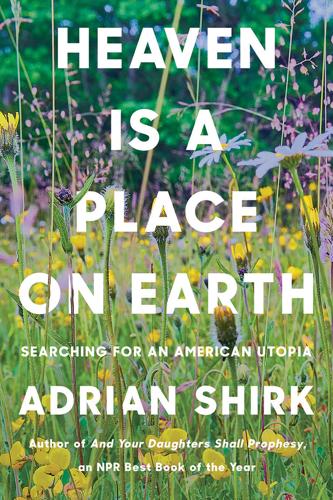
Heaven Is a Place on Earth: Searching for an American Utopia
by
Adrian Shirk
Published 15 Mar 2022
A year and a half into caring for Dan, Sweeney—after forty hours a week of fighting phone lines, standing in queue, sitting by his bedside, running errands, filing and refiling papers, researching public assistance, bribing bankers and landlords, and more—finally won MAGI Medicaid, as well as a traumatic brain injury provision, which allowed us to move Dan into an apartment four blocks from us, with state-paid twenty-four-hour home health aides, all of whom were Black women from Wakefield or Mt. Vernon. Sweeney’s hair started to go gray. He started to drink more. Regardless of the home health aides’ continuous presence, our participation was still required daily: administering insulin and Dunkin’ Donuts ice coffees, scheduling and shuttling to the doctors, the hospital, the pharmacy, various therapies and errands, wheelchair walks to the park or the pub, fielding suicidal ideation and stock market obsessions next to Dan’s sixty-four-inch TV set while his stroke recovery regressed by the light of his preferred viewing of twenty-four-hour Fox News broadcasts.
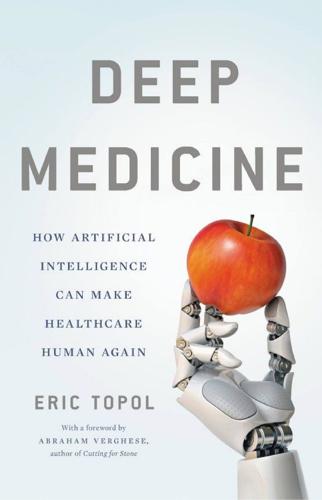
Deep Medicine: How Artificial Intelligence Can Make Healthcare Human Again
by
Eric Topol
Published 1 Jan 2019
For heart studies, there has been accurate interpretation of electrocardiograms for heart-rhythm abnormalities and echocardiographic images. In cancer, machines have diagnosed skin lesions and pathology slides well. Much work has been done to advance diagnosis of many eye diseases quite accurately from retinal images. Processing of sounds—voice and speech—has helped in the diagnosis of post-traumatic stress disorder or traumatic brain injury. Even the audio waveforms of a cough have been used to assist the diagnosis of asthma, tuberculosis, pneumonia, and other lung conditions. The Face2Gene app from FDNA is worth highlighting as it can help the diagnosis for more than 4,000 genetic conditions, many of which can be extremely difficult to pinpoint.

Getting Past Your Past: Take Control of Your Life With Self-Help Techniques From EMDR Therapy
by
Francine Shapiro
Published 26 Mar 2013
We have much more research and investigation to do over the next decade in all of these areas. But so far, the evidence is pointing to the possibility of not having to give up on anyone. And that’s good news for all of us. I’m not saying that all people can be successfully treated at this time. There’s a lot more to learn. For instance, some research is indicating that traumatic brain injuries can also contribute to criminal behavior. But the destructive behavior of millions of people who commit crimes is driven by treatable mental health problems. The reasons may have come from childhood, or trauma can sneak up on them as an adult and shake their very core. Sam is a good example of that.

Work Won't Love You Back: How Devotion to Our Jobs Keeps Us Exploited, Exhausted, and Alone
by
Sarah Jaffe
Published 26 Jan 2021
Lorraine Dixon, the wife of Rickey Dixon, a former NFL player diagnosed with a different neurodegenerative disease, amyotrophic lateral sclerosis (ALS), let reporters into her daily life. Dixon played six seasons in the NFL; the money was gone by the time he got sick, at forty-seven. The $1 billion settlement the NFL agreed to pay out over traumatic brain injuries meant some money for the Dixons, but not even enough for Lorraine to quit her job. So she cared for two children and her husband, who used a wheelchair, around her work schedule—the health insurance from her job was necessary to keep her husband’s treatments up. Dixon and other NFL wives had organized on a Facebook group, supporting one another while they waited out the legal battles and the heartbreak of watching their husbands spiral down.
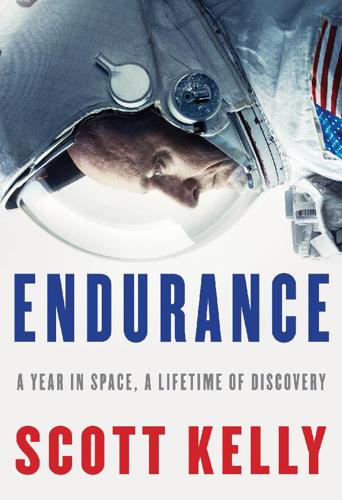
Endurance: A Year in Space, a Lifetime of Discovery
by
Scott Kelly
and
Margaret Lazarus Dean
Published 14 Aug 2017
We had dinner together at the hospital, and as the visit went on I could see Gabby’s warmth and her sense of humor. Later, Amiko and I talked about how Gabby was doing, and Amiko said she thought Gabby looked great considering how recent her injury was. Amiko reminded me how long it had taken her own sister to walk, to speak, to regain aspects of her personality after sustaining a traumatic brain injury in a car accident. Amiko didn’t want to be overoptimistic, but she knew from experience that people could make huge strides after being in terrible shape. Gabby was still very much herself, and that was a promising indication for her recovery. “I can see Gabby in Gabby” is how Amiko put it, and she was right.

Imaginable: How to See the Future Coming and Feel Ready for Anything―Even Things That Seem Impossible Today
by
Jane McGonigal
Published 22 Mar 2022
A decline in EFT skills can cause people to have difficulty planning, preparing, and motivating themselves effectively for the future. This can lead to problems with everyday activities, like knowing what to bring with you when you leave home because you’ll need it later, or actually buying a ticket for an event you plan to attend. And in extreme cases, especially with traumatic brain injury, an inability to vividly imagine the future can lead to suicidal ideation—because the brain literally can’t imagine any future, let alone a positive one. The growing evidence on how EFT relates to psychological well-being and cognitive health has led researchers to experiment with training techniques to improve EFT skills, to significant success.
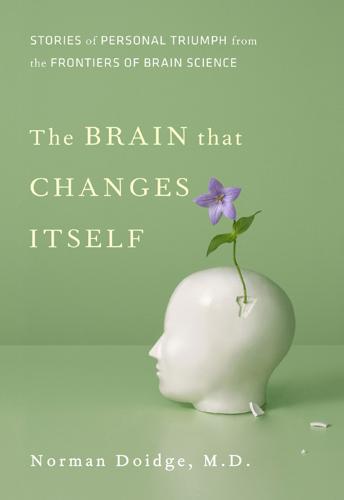
The Brain That Changes Itself: Stories of Personal Triumph From the Frontiers of Brain Science
by
Norman Doidge
Published 15 Mar 2007
Preliminary data—not on patients receiving Taub’s treatment, but on patients in an inpatient neurorehabilitation program—show that in some patients who have both movement and cognitive deficits from their strokes there is a trade-off as they improve; the more cognitive improvement they show, the less improvement they make in movement, and vice versa. R. E. A. Green, B. Christensen, B. Melo, G. Monette, M. Bayley, D. Hebert, E. Inness, and W. Mcilroy. 2006. Is there a trade-off between cognitive and motor recovery after traumatic brain injury due to competition for limited neural resources? Brain and Cognition, 60(2): 199–201. to help stroke patients who have damage to Broca’s area: F. Pulvermüller, B. Neininger, T. Elbert, B. Mohr, B. Rockstroh, M. A. Koebbel, and E. Taub. 2001. Constraint-induced therapy of chronic aphasia after stroke.
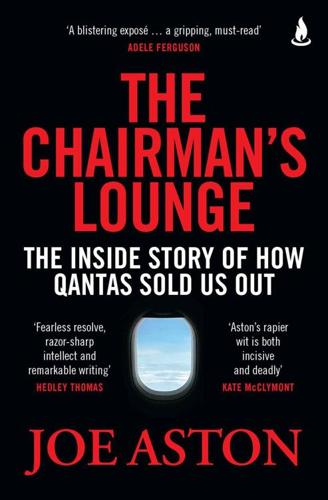
The Chairman's Lounge: The inside story of how Qantas sold us out
by
Joe Aston
Published 27 Oct 2024
In 2022, Dean Paatsch, co-founder of corporate governance firm Ownership Matters, introduced me to the work of another American psychologist, Dacher Keltner, whose lab research over twenty years supported the contention that power has a debilitating cognitive effect on powerful people, often causing them to exhibit the symptoms of traumatic brain injury. Over time, power makes them more impulsive, less risk-aware, and less adept at seeing things from other people’s point of view. People of high status also become less attuned to social reciprocity, which subliminally prompts us to laugh when others laugh or tense when others tense. The powerful, Keltner says, ‘stop simulating the experience of others,’ creating an ‘empathy deficit’.

Rocket Dreams: Musk, Bezos and the Trillion-Dollar Space Race
by
Christian Davenport
Published 6 Sep 2025
See NASA Virgin Galactic, 265–71, 272 Walker, Robert, 15 Waltz, Mike, 322 Wang Yaping, 323 Washington Post, 21–22, 32–33, 36, 163, 165–66, 217–19 Watkins, Jessica, 159 Western, Craig, 130–31 Wicker, Robert, 147–48 Wilford, John Noble, 239 Williams, Suni, 310 Wilmore, Barry “Butch,” 310 Wingrove, Josh, 240 Wiseman, Reid, 294 Worden, Al, 64 Work, Robert O., 18 Wörner, Jan, 111 Yang Liwei, 17 Yaping, Wang, 323 Ye Peijian, 263–64 Zhou Yanfei, 233 Zurbuchen, Thomas, 35 ABOUT THE AUTHOR Christian Davenport has been a staff writer at The Washington Post for more than twenty-five years, most recently covering NASA and the space industry. He is a recipient of an Emmy Award for his work on the Discovery and Science Channels covering SpaceX’s first human spaceflight mission, and a Pea-body Award for his work on veterans with traumatic brain injuries. He has been on reporting teams that were finalists for the Pulitzer Prize three times. As a frequent radio and television commentator, he has appeared on MSNBC, CNN, CBS, PBS NewsHour, and several NPR shows.

Transcend: The New Science of Self-Actualization
by
Scott Barry Kaufman
Published 6 Apr 2020
You can clearly see how his theory represented an integration of all of his influences up to that point in his life.10 One particularly important influence on Maslow’s theory of motivation was the writings of Kurt Goldstein, who the late neurologist Oliver Sacks described as “one of the most important, most contradictory, and now most forgotten figures in the history of neurology and psychiatry.”11 Goldstein emigrated from Germany to the United States in 1935 at the height of his career, having lost everything he had built up over the course of fifty years in Europe, including the institute he founded. Through his treatment of young soldiers with traumatic brain injuries, Goldstein argued that the field of neurology needed a new “holistic approach” to fully understand the rehabilitation of patients, one that takes into account the “whole organism.” In his 1934 magnum opus The Organism, Goldstein observed that there is an innate “drive for self-preservation” among patients to “utilize the preserved capacities in the best possible way . . .
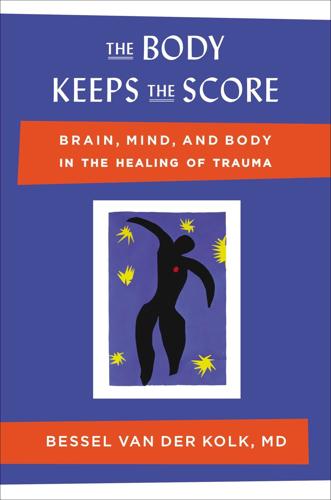
The Body Keeps the Score: Brain, Mind, and Body in the Healing of Trauma
by
Bessel van Der Kolk M. D.
Published 7 Sep 2015
THE FUTURE OF NEUROFEEDBACK In my practice I use neurofeedback primarily to help with the hyperarousal, confusion, and concentration problems of people who suffer from developmental trauma. However, it has also shown good results for numerous issues and conditions that go beyond the scope of this book, including relieving tension headaches, improving cognitive functioning following a traumatic brain injury, reducing anxiety and panic attacks, learning to deepen meditation states, treating autism, improving seizure control, self-regulation in mood disorders, and more. As of 2013 neurofeedback is being used in seventeen military and VA facilities to treat PTSD,32 and scientific documentation of its efficacy in recent combat vets is just beginning to be assessed.
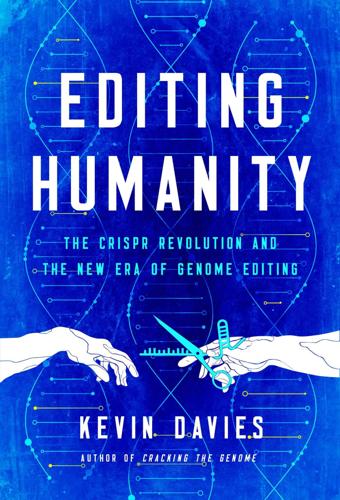
Editing Humanity: The CRISPR Revolution and the New Era of Genome Editing
by
Kevin Davies
Published 5 Oct 2020
Antonio Regalado, “China’s CRISPR twins might have had their brains inadvertently enhanced,” MIT Technology Review, February 21, 2019, https://www.technologyreview.com/s/612997/the-crispr-twins-had-their-brains-altered/. 10. M. T. Joy et al., “CCR5 Is a Therapeutic Target for Recovery after Stroke and Traumatic Brain Injury,” Cell 176, (2019): 1143–1157, https://www.cell.com/cell/pdf/S0092-8674(19)30107-2.pdf. 11. X. Wei and R. Nielsen, “Retraction Note: CCR5-∆32 is deleterious in the homozygous state in humans,” Nature Medicine 25, (2019): 1796, https://www.nature.com/articles/s41591-019-0637-6. 12. Rebecca Robbins, “Major error undermines study suggesting change introduced in the CRISPR babies experiment shortens lives,” STAT, September 27, 2019, https://www.statnews.com/2019/09/27/major-error-undermines-study-suggesting-change-introduced-in-the-crispr-babies-experiment-shortens-lives/. 13.
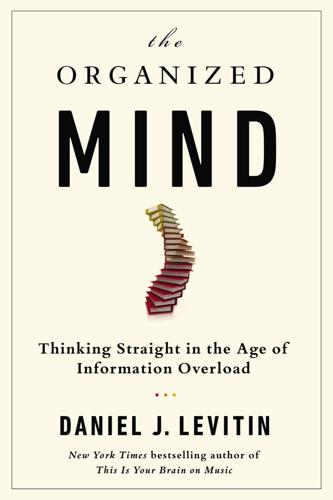
The Organized Mind: Thinking Straight in the Age of Information Overload
by
Daniel J. Levitin
Published 18 Aug 2014
revealing a failure in temporal control Knight, R. T., & Grabowecky, M. (2000). Prefrontal cortex, time, and consciousness. In M. Gazzaniga (Ed.), The new cognitive neurosciences (pp. 1319–1337). Cambridge, MA: MIT Press. not aware of their deficit Prigatano, G.P. (1991). Disturbances of self-awareness of deficit after traumatic brain injury. In G. P. Prigatano & D. L. Schacter (Eds.), Awareness of deficit after brain injury: Clinical and theoretical issues (pp. 111–126). New York, NY: Oxford University Press. and, Stuss, D. T. (1991). Disturbances of self-awareness after frontal system damage. In G. P. Prigatano & D. L. Schacter (Eds.), Awareness of deficit after brain injury: Clinical and theoretical issues (pp. 63–83).

The Achilles Trap: Saddam Hussein, the C.I.A., and the Origins of America's Invasion of Iraq
by
Steve Coll
Published 27 Feb 2024
More than forty-four hundred American soldiers, Marines, and airmen died in combat in Iraq, along with several thousand contractors, and more than thirty thousand were wounded. Advances in force protection and battlefield medicine meant that many of the American wounded, although fortunate to survive, suffered severe, often lifelong injuries, including traumatic brain injuries and the loss of arms and legs. And the deaths and injuries unleashed by the invasion are only one dimension of the war’s impact on Iraq, the Middle East, and America. The invasion and occupation relieved Iraq of Saddam’s tyranny and empowered Kurds and the country’s long-suppressed Shia majority, but it also further fragmented the Iraqi state, invited Iranian interference, strengthened al-Qaeda for a time, and contributed to the birth of the Islamic State, among other destabilizing consequences that undermined the security of America and its allies.

The Impact of Early Life Trauma on Health and Disease
by
Lanius, Ruth A.; Vermetten, Eric; Pain, Clare
Published 11 Jan 2011
One study comparing EMDR with fluoxetine or pill placebo found that participants in the EMDR group who had experienced later-life trauma (i.e., after 18 years of age) showed significantly higher treatment response than those participants in the EMDR group who had experienced childhood-onset trauma [53]. In contrast, there were no differences in improvement based on onset of trauma in either the fluoxetine or pill placebo group. Finally, with the increasing attention turning to the combined effects of traumatic brain injury and PTSD, increased research will be needed to determine the impact that this physical disorder may have on the treatment of PTSD and vice versa. Conclusions Current research has demonstrated that CBT interventions are effective in the treatment of PTSD and related symptoms. As these treatments continue to evolve and are applied to new populations, it will be possible to examine the effects of individual and combined models on very specific individual characteristics to improve therapy–client matching.

Seeking SRE: Conversations About Running Production Systems at Scale
by
David N. Blank-Edelman
Published 16 Sep 2018
This work is often expected of retail and service employees, particularly women, and is usually uncompensated. 2 Jennifer Davis on hero culture (DevOpsDays Boston 2014) , John Sawers on emotions (DevOpsDays Boston 2017), Emily Gorcenski on strength and emotional labor (SREcon17 EMEA), Jaime Woo on psychological safety (SREcon18 Americas), and many others. 3 Note that there are also many brain disorders that can cause mental symptoms — for example, stroke, Alzheimer’s disease, and traumatic brain injury. Although not classified as mental disorders due to the different cause and prognosis, they are likely to benefit from similar accommodations in the workplace. 4 Different sources cite a range of numbers; I have seen reported lifetime rates from 15% through 70% depending on what specifically is being measured and how.
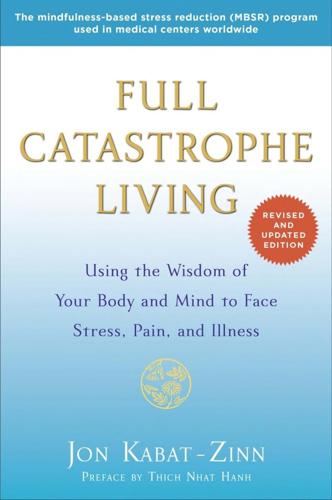
Full Catastrophe Living (Revised Edition): Using the Wisdom of Your Body and Mind to Face Stress, Pain, and Illness
by
Jon Kabat-Zinn
Published 23 Sep 2013
This is one of the most important roles that an MBSR program can play in a person’s life—and in medical care more generally. It may be particularly important for soldiers and veterans returning from war zones such as Iraq and Afghanistan with physical wounds and blast injuries resulting in traumatic brain injury of varying severity as well as post-traumatic stress, particularly when pain is a part of the picture. In the best of cases, which is probably still the exception rather than the rule, a person with chronic pain will receive the ongoing support of a highly trained multidisciplinary pain clinic staff.

Palo Alto: A History of California, Capitalism, and the World
by
Malcolm Harris
Published 14 Feb 2023
The Governor could certainly afford to find out. And if it could be done, there was one man in Alta California to make it happen. Edward Muybridge was going by the nom de bouton Helios, his brand logo a camera with wings, and quite a brand it was. A notoriously irascible man—later attributed in part to a traumatic brain injury from an 1860 carriage accident—Muybridge preferred to work alone, which was difficult to do as a nineteenth-century photographer since portraiture, with its emphasis on customer service, was the bulk of the business. Still, there was plenty worth seeing in the West besides wannabe genteel white people, and Muybridge decided he was the man to capture the rest.

The Master and His Emissary: The Divided Brain and the Making of the Western World
by
Iain McGilchrist
Published 8 Oct 2012
J., ‘Functional imaging studies of category specificity’, in Forde, E. M. E. & Humphreys, G. W. (eds.), Category Specificity in Brain and Mind, Psychology Press, Hove, UK, 2002, pp. 427–47 Price, D. W., History Made, History Imagined, University of Illinois Press, Champaign IL, 1999 Prigatano, G., ‘Disturbances of self-awareness of deficit after traumatic brain injury’, in Prigatano, G. & Schacter, D. (eds.), Awareness of Deficit After Brain Injury, Oxford University Press, Oxford, 1991, pp. 111–26 ——, ‘Individuality, lesion location and psychotherapy after brain injury’, in Christiansen, A.-L. & Uzzell, B. P. (eds.), Brain Injury and Neuropsychological Rehabilitation: International Perspectives, Laurence Erlbaum, Hillsdale NJ, 1994, pp. 173–86 Prins, R. & Bastiaanse, R., ‘The early history of aphasiology: from the Egyptian surgeons (c. 1700 BC) to Broca (1861)’, Aphasiology, 2006, 20(8), pp. 762–91 Prinz, W., ‘Experimental approaches to imitation’, in Meltzoff, A. & Prinz, W.